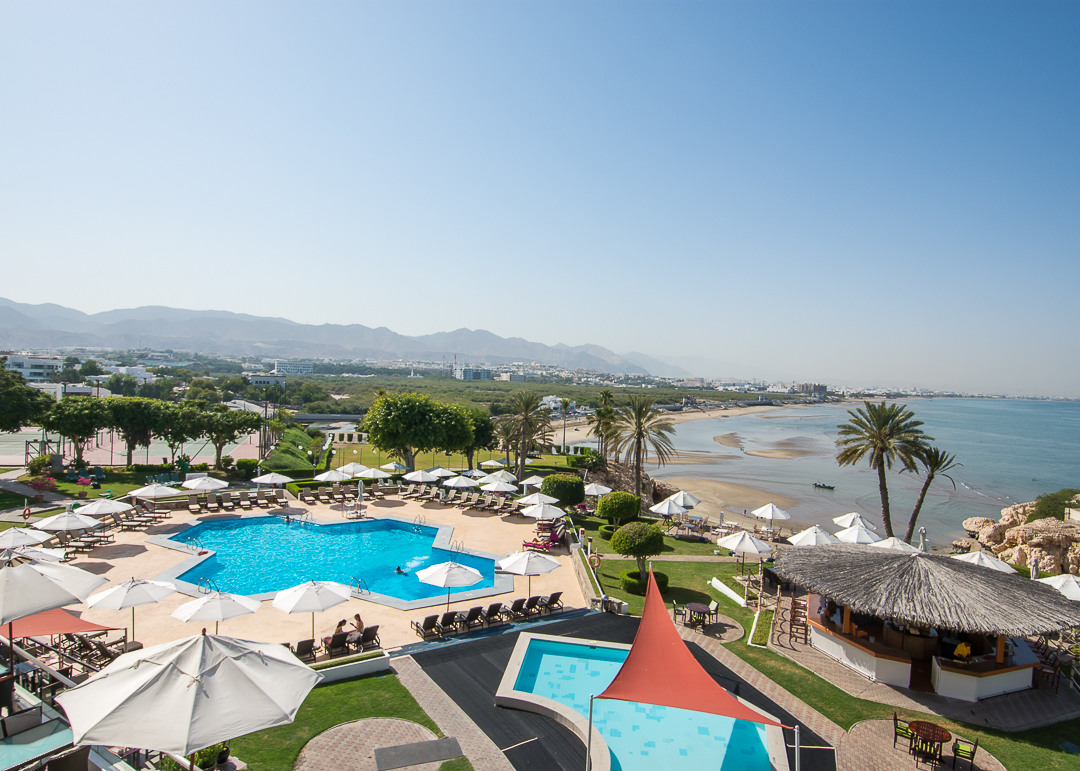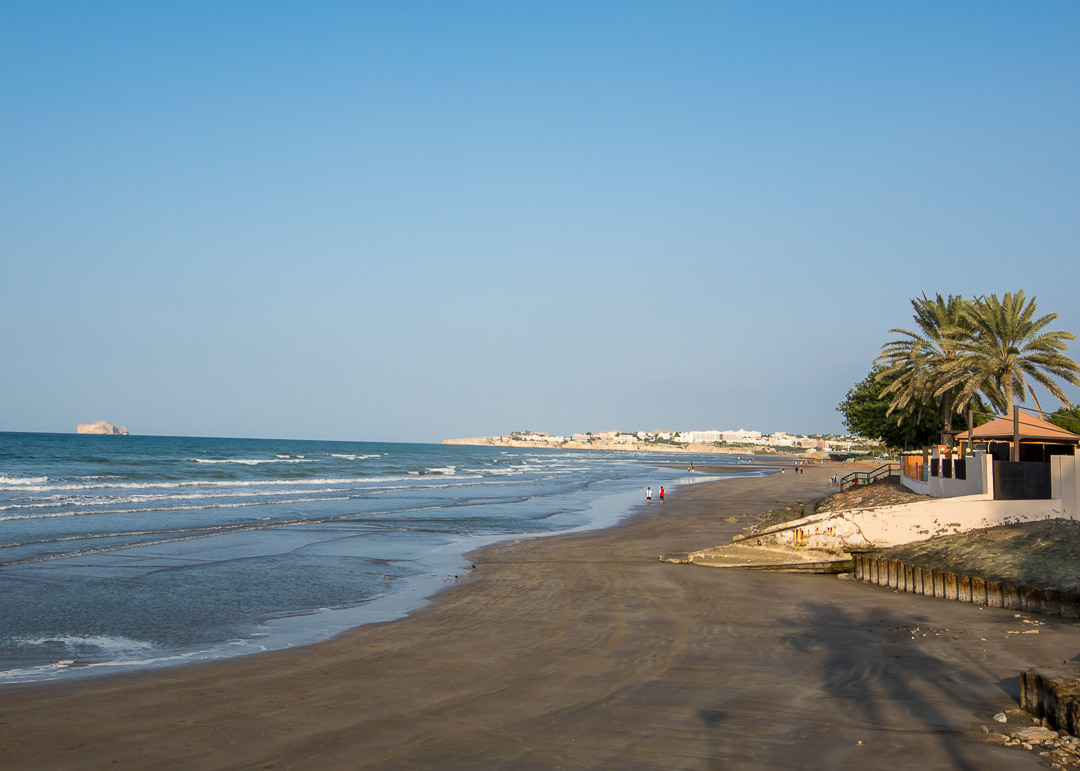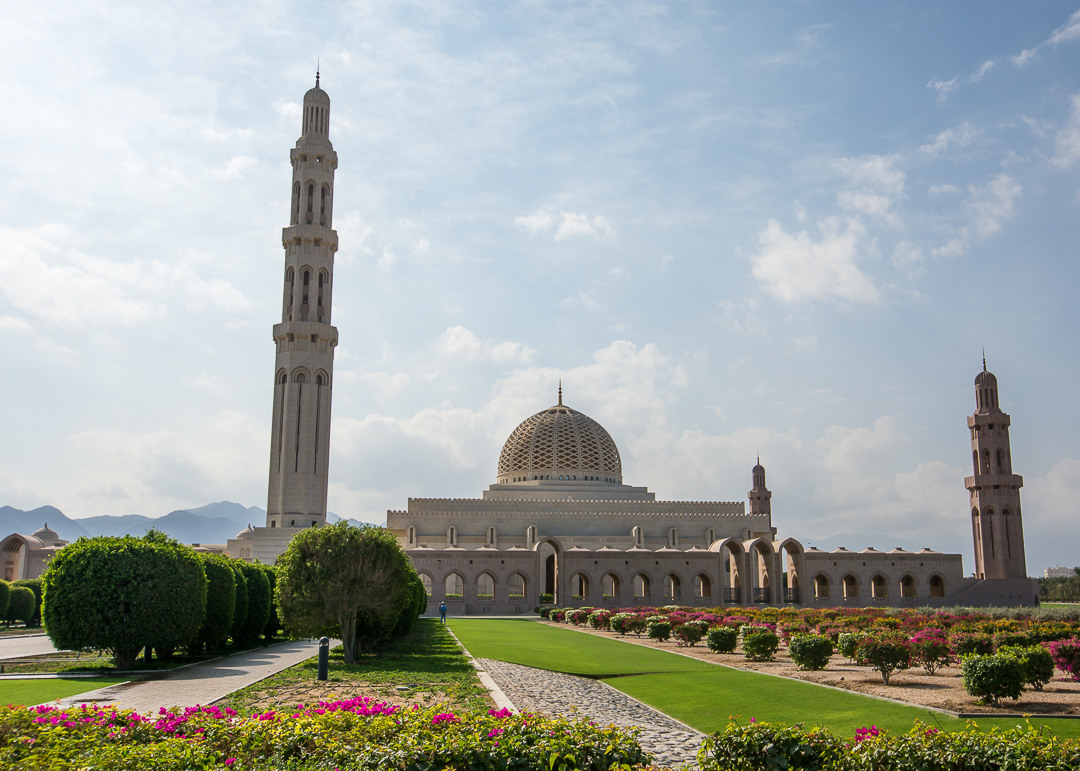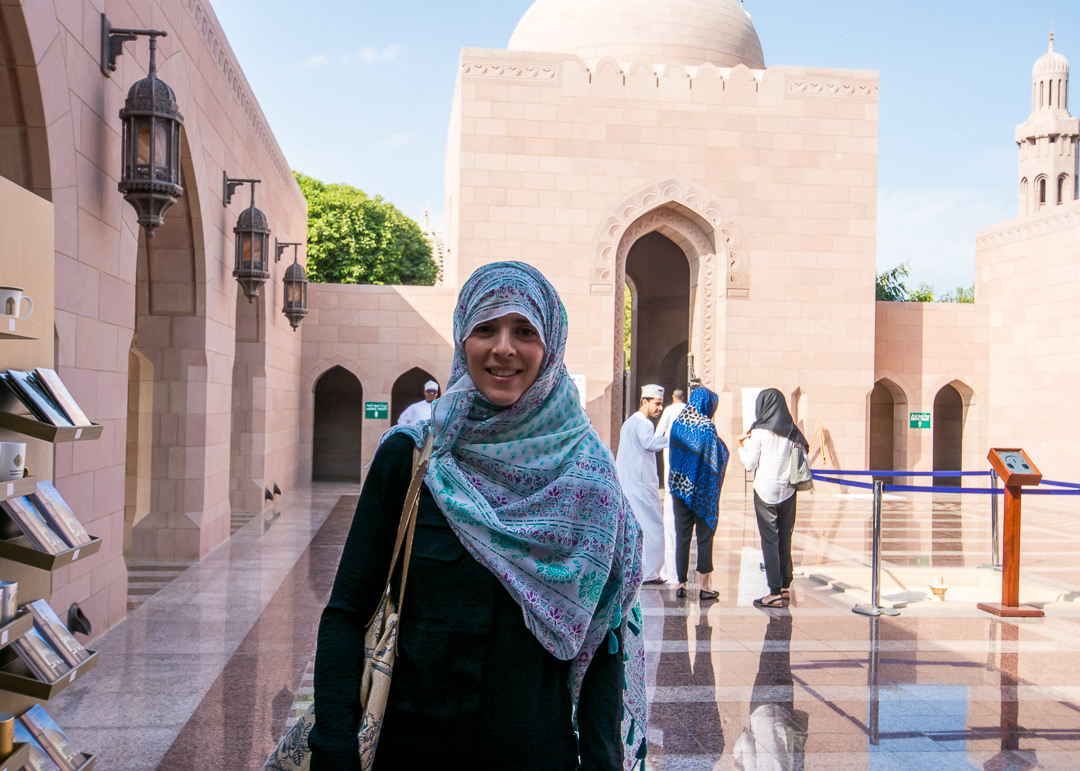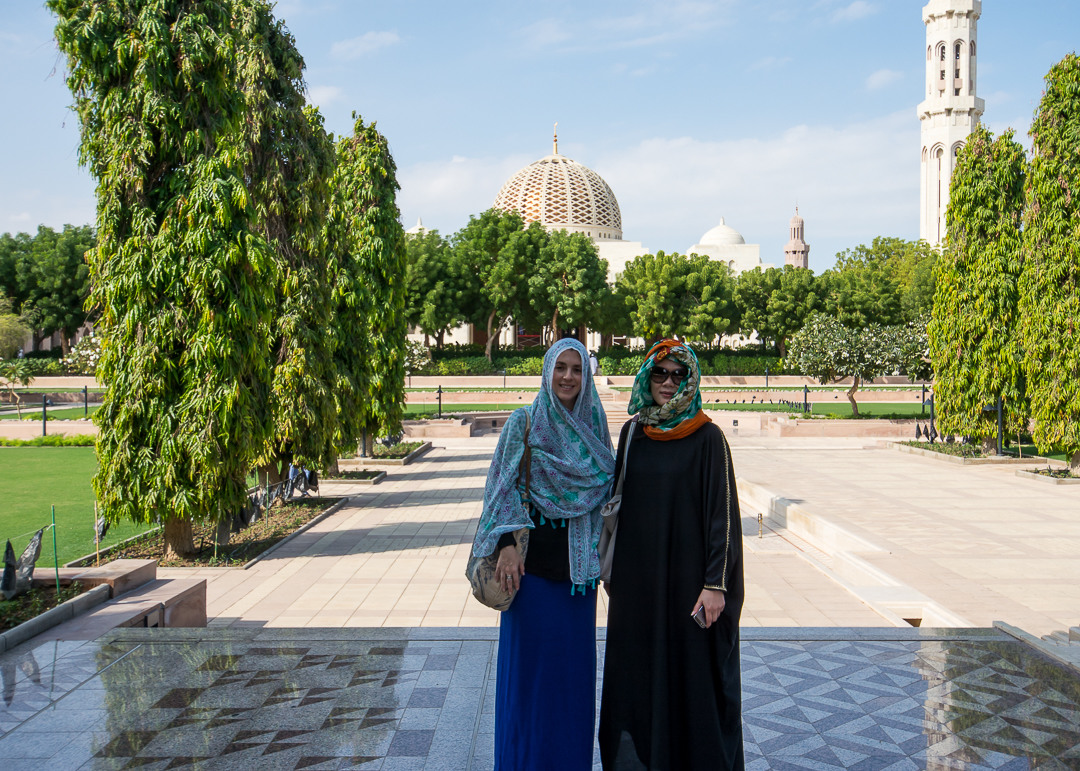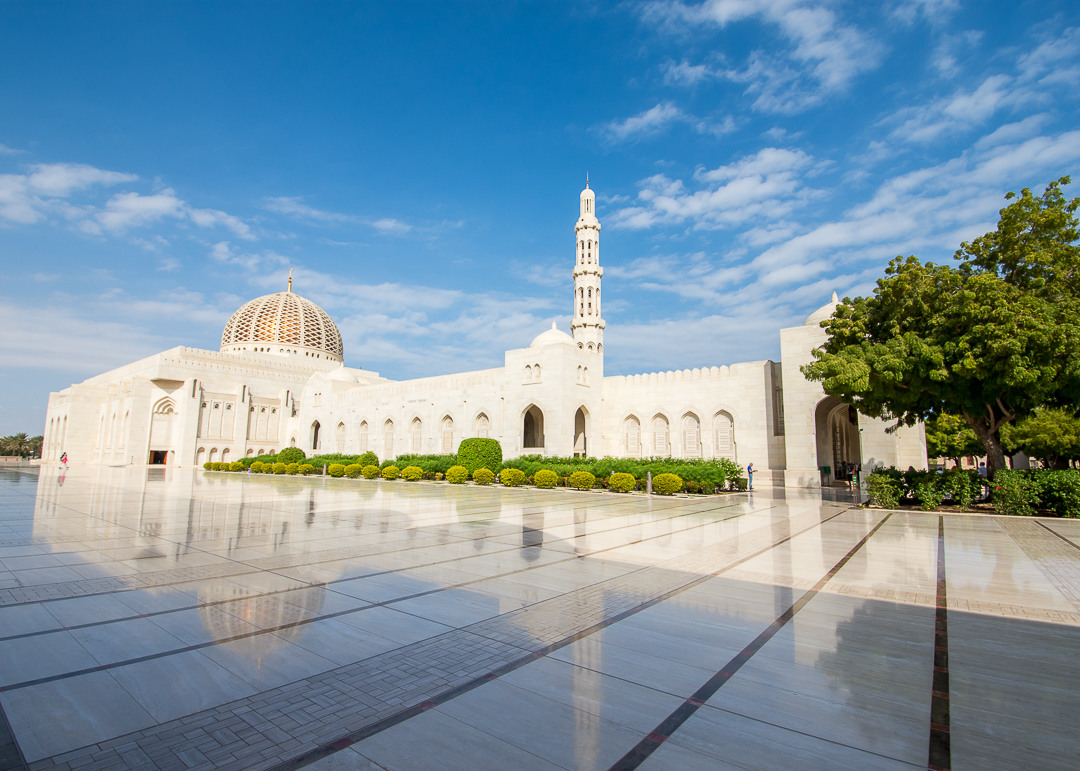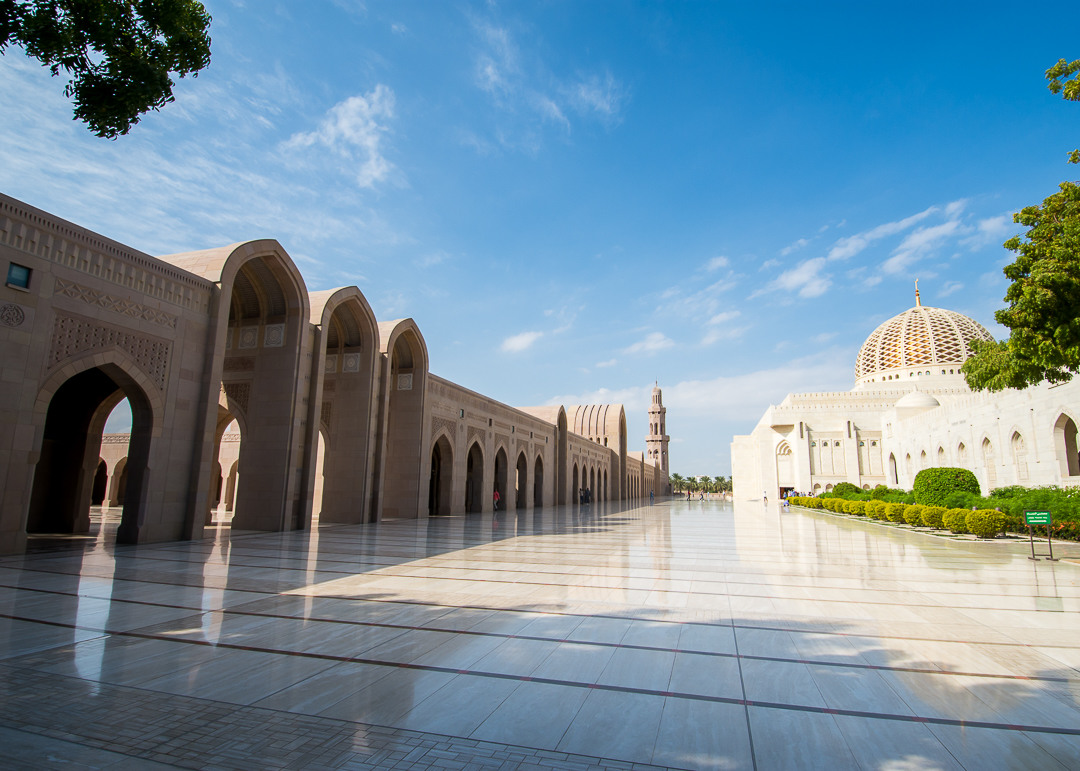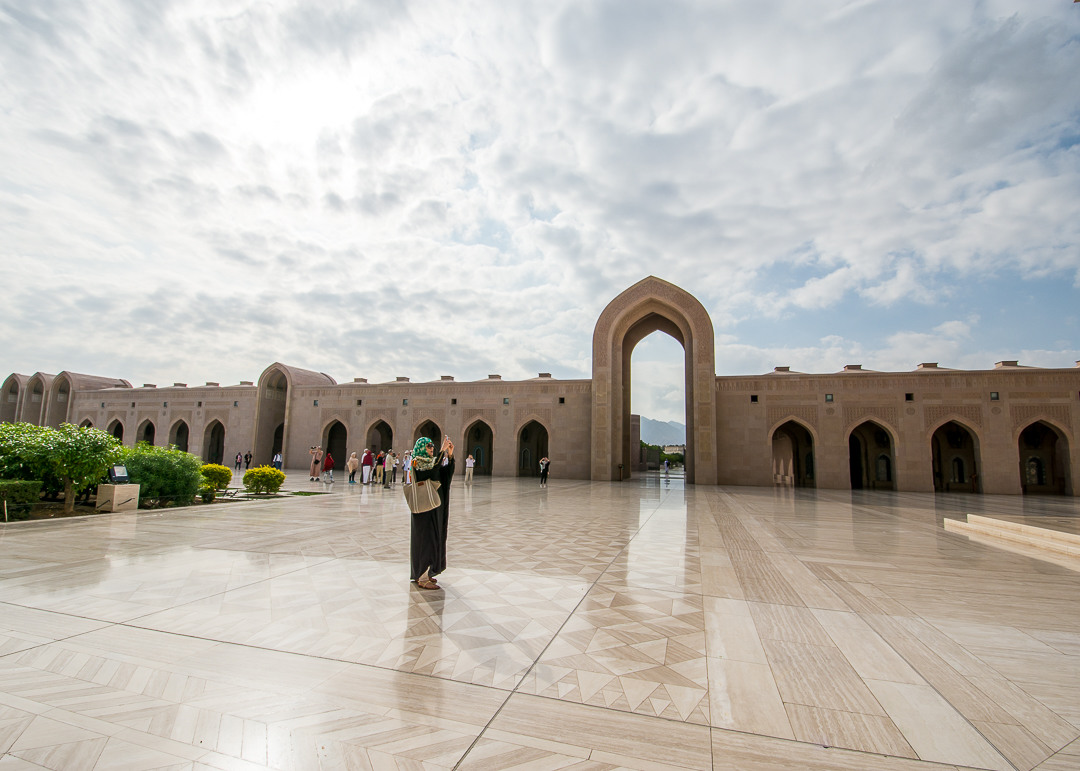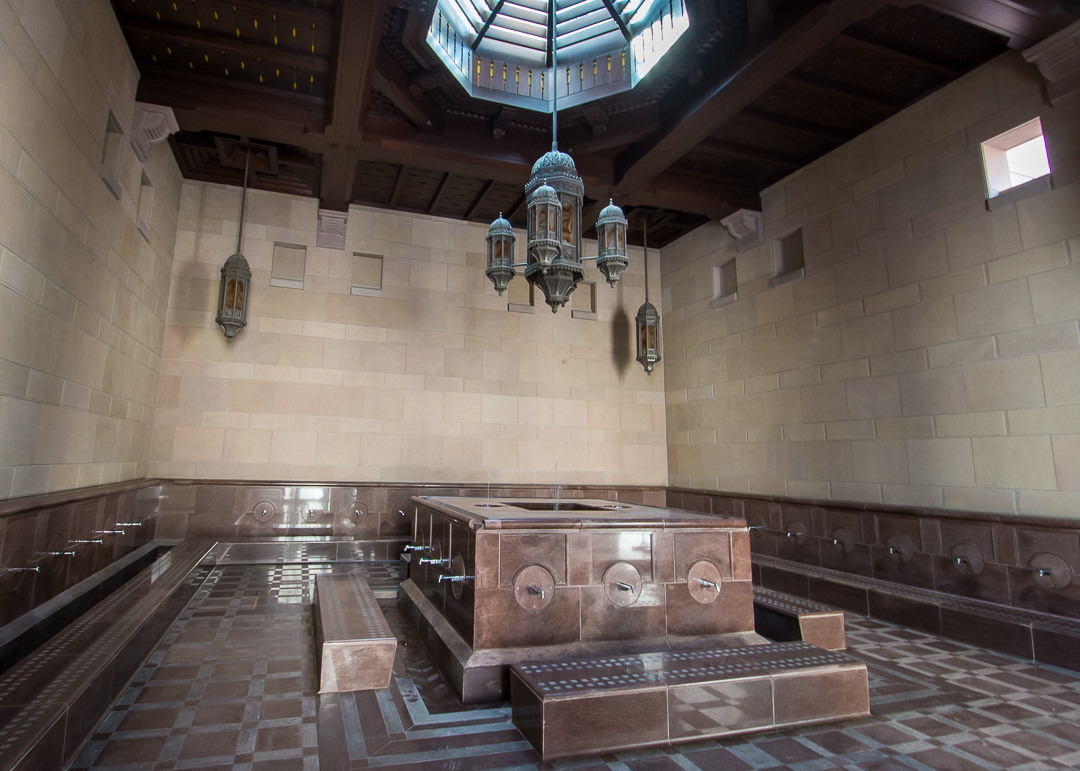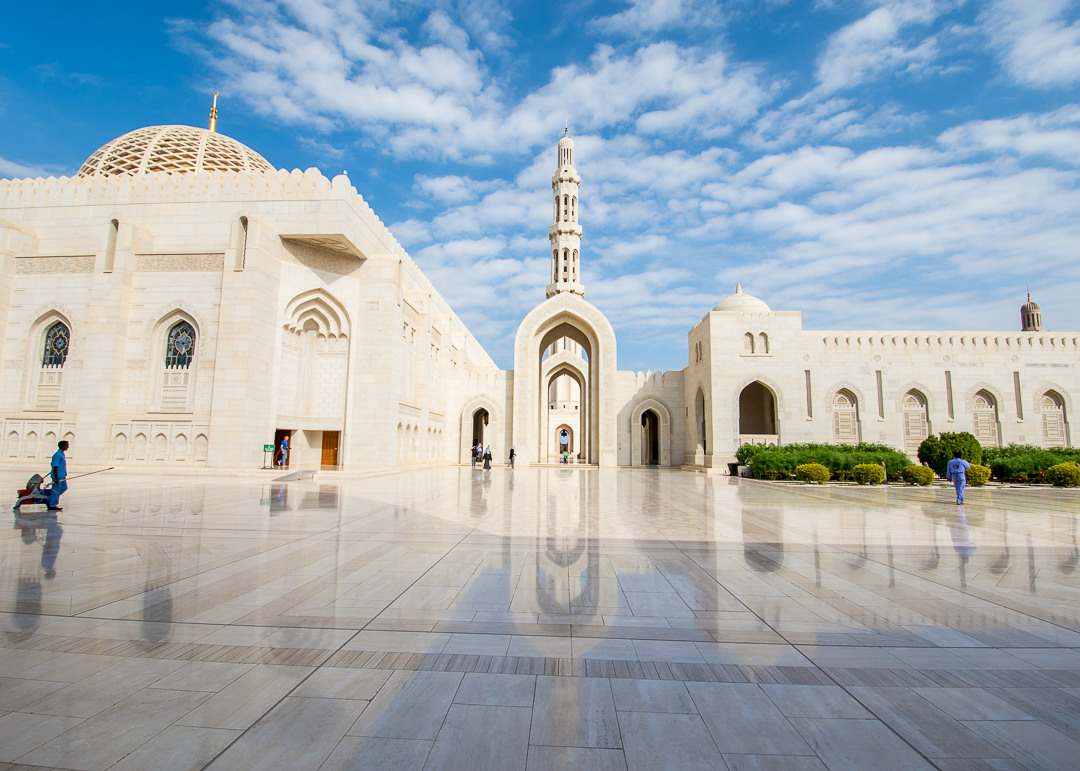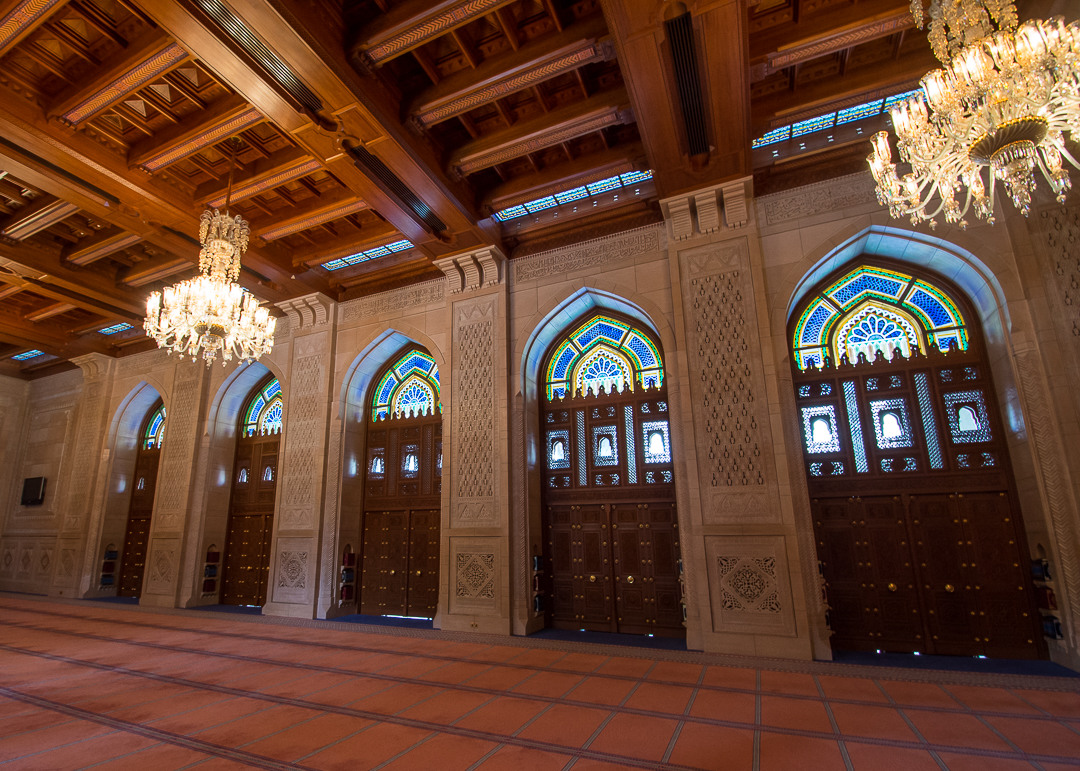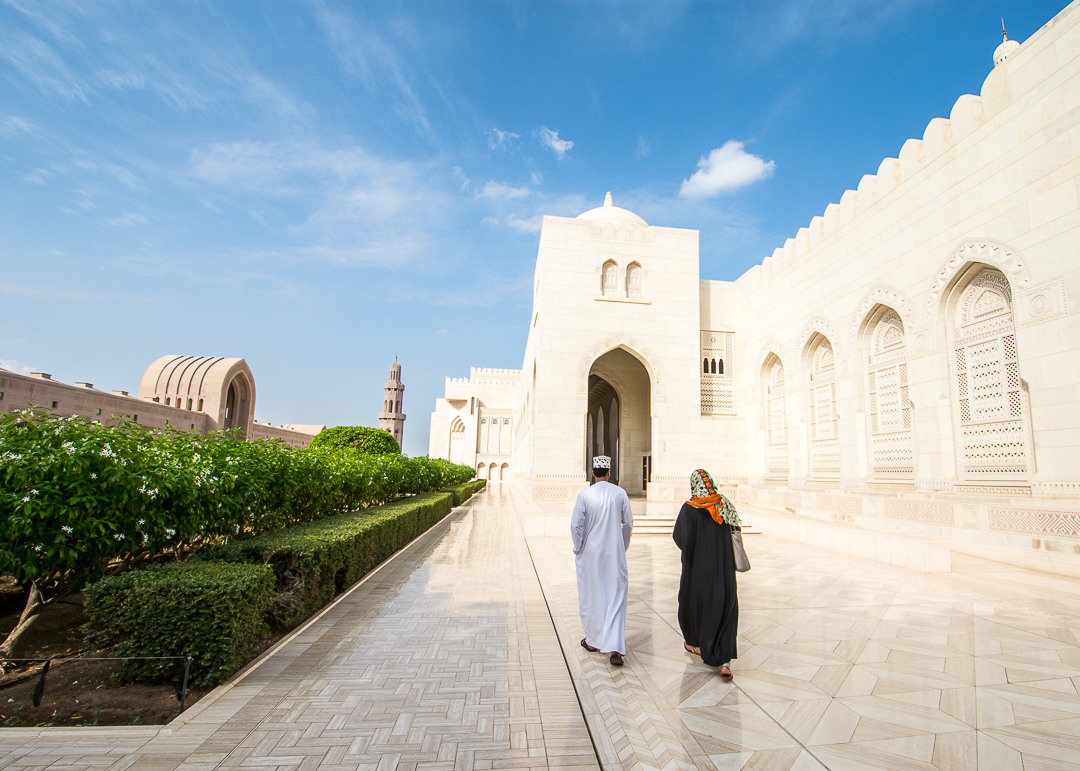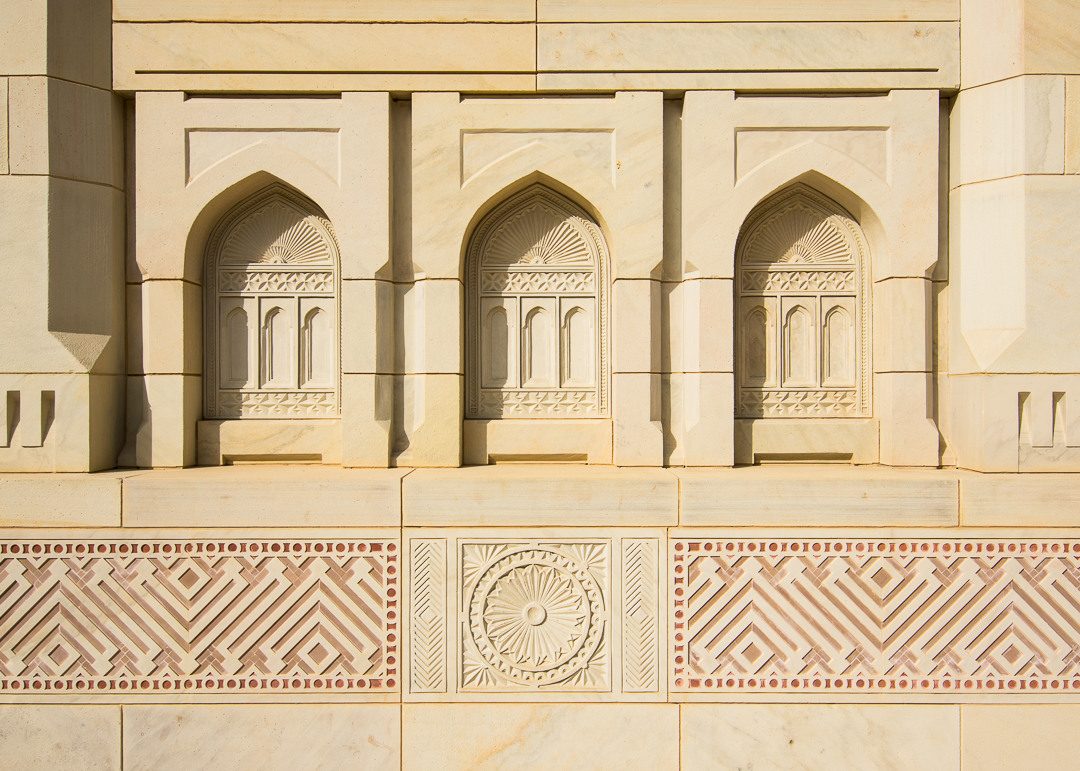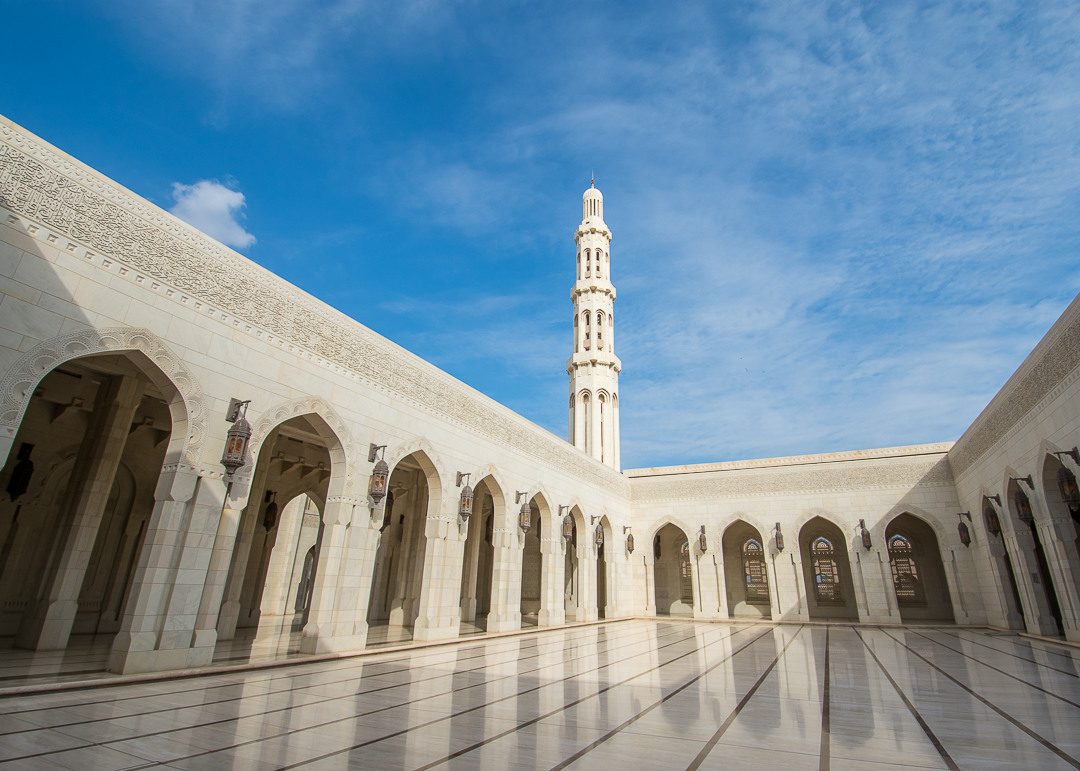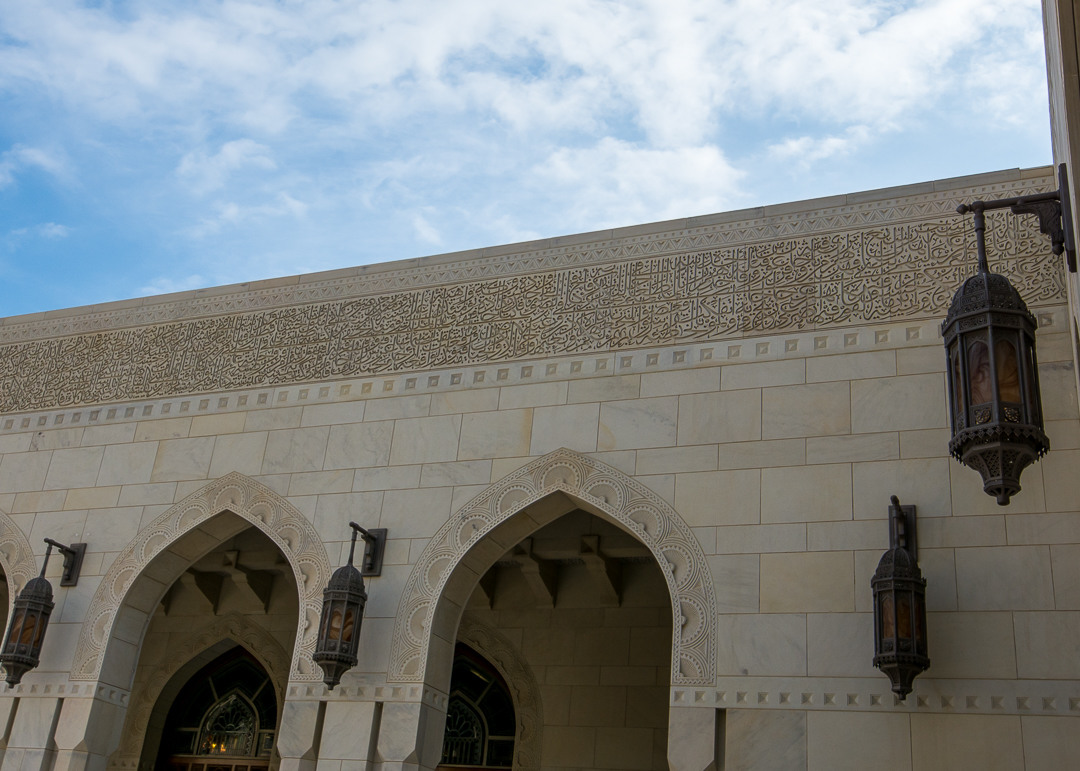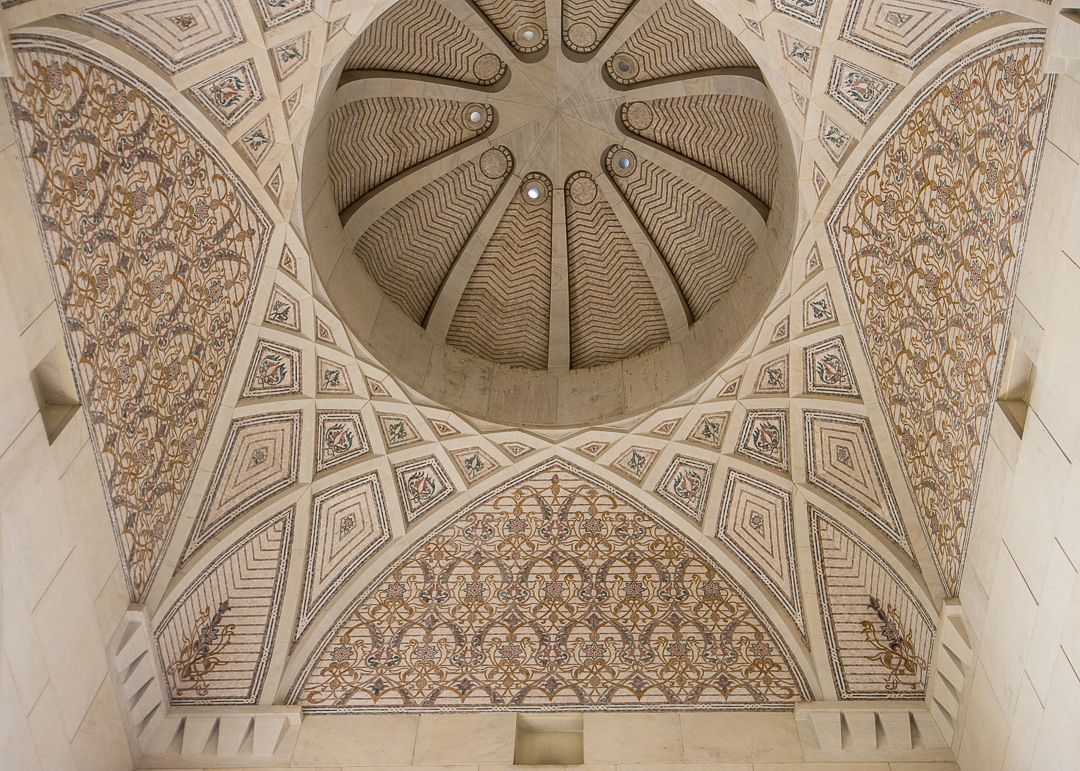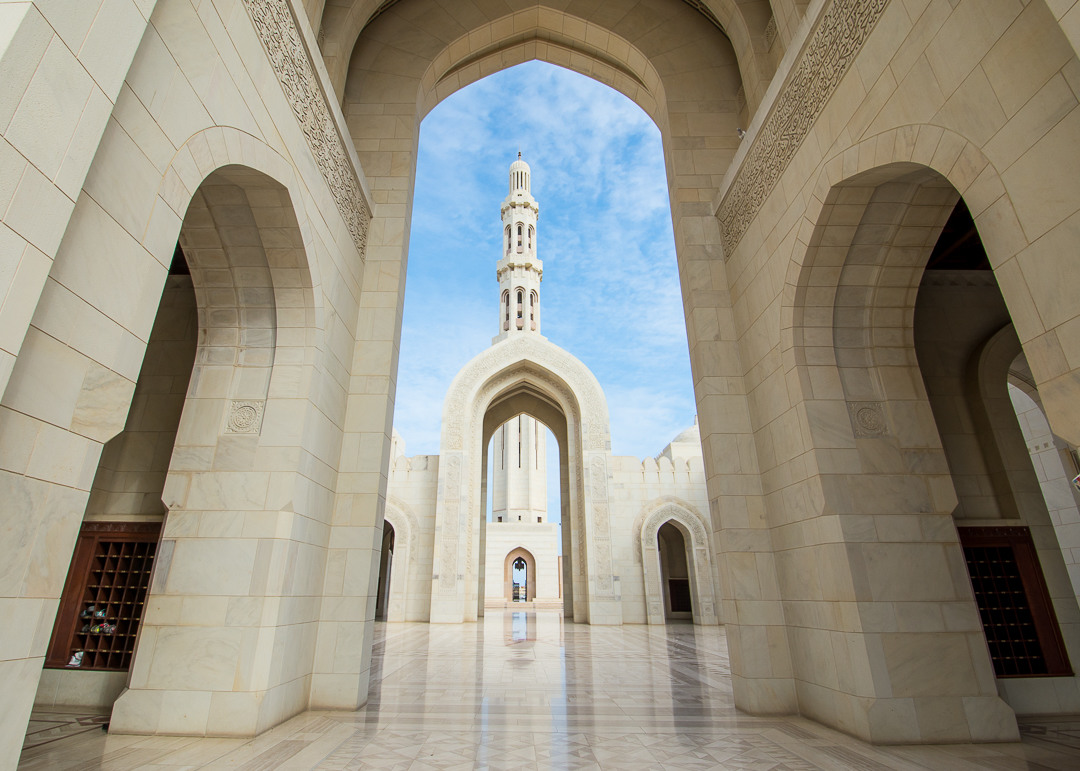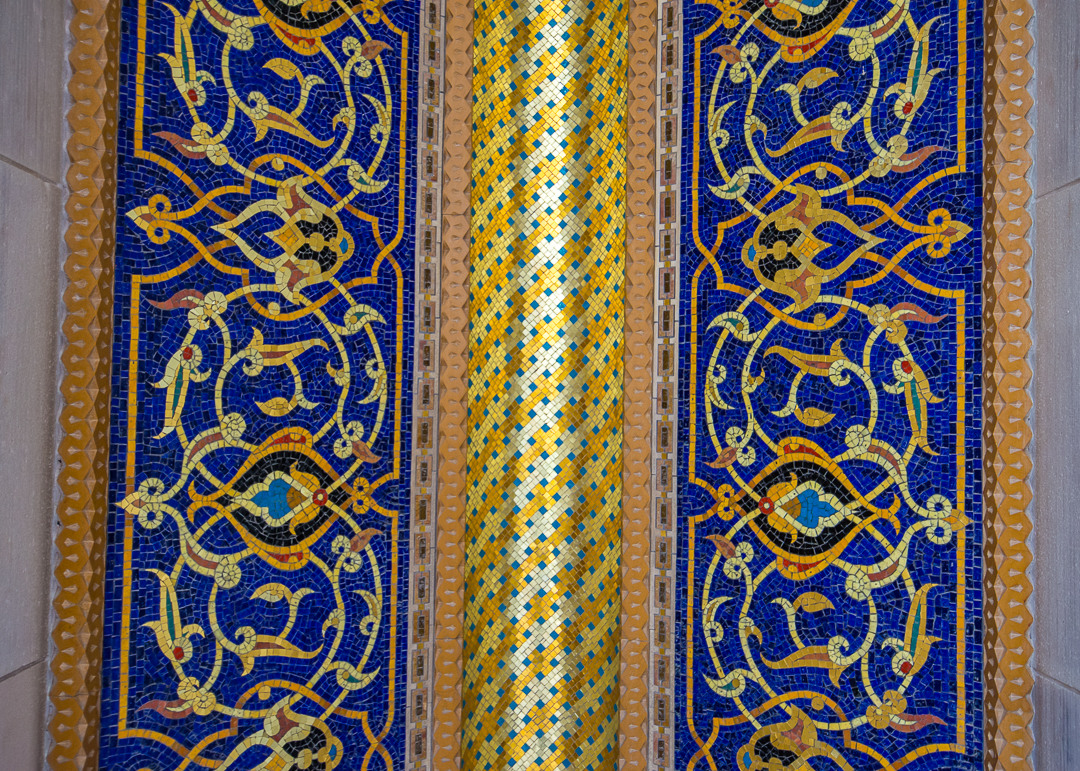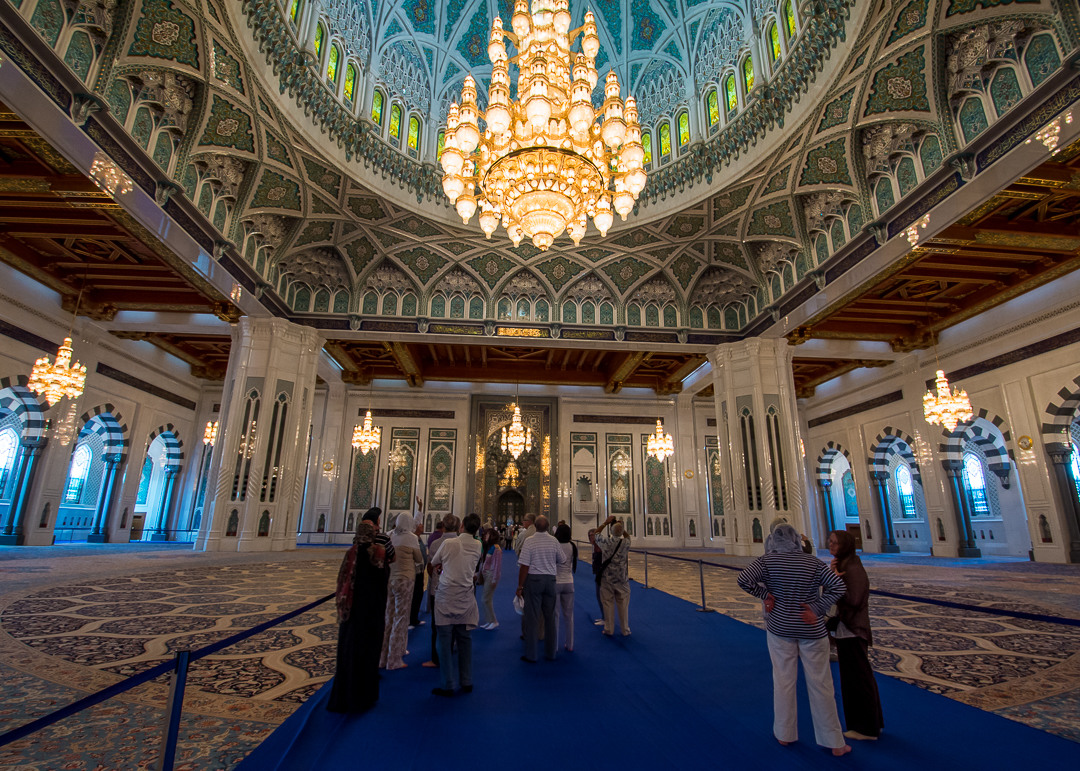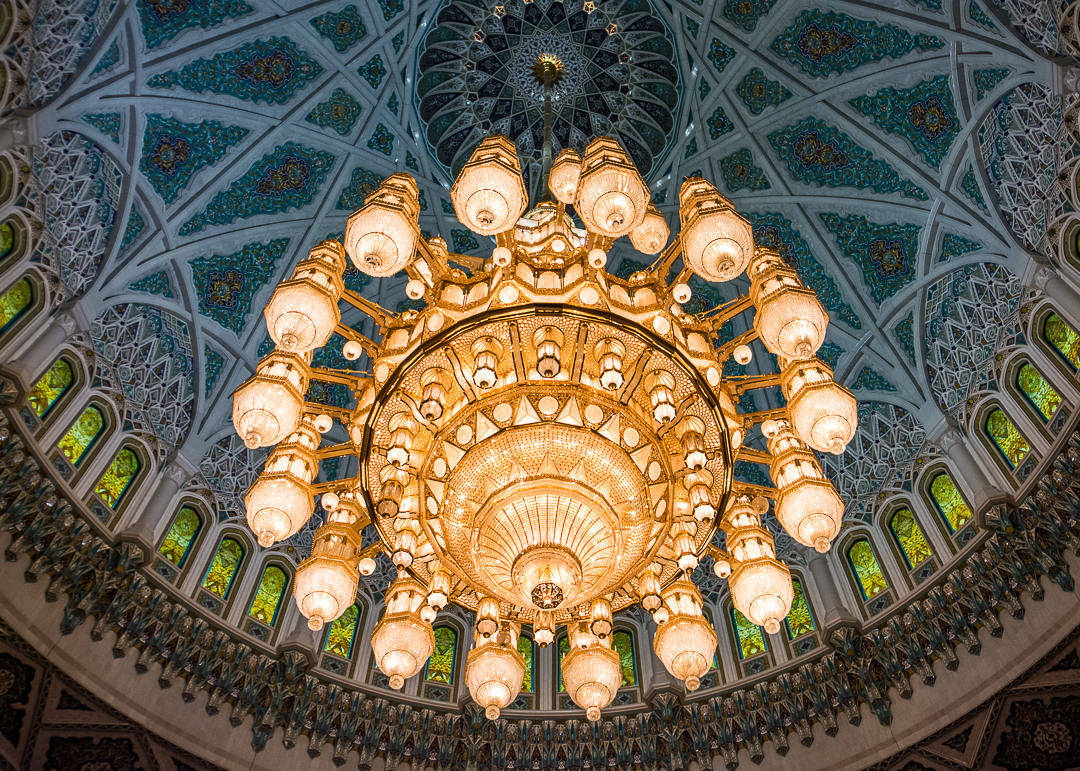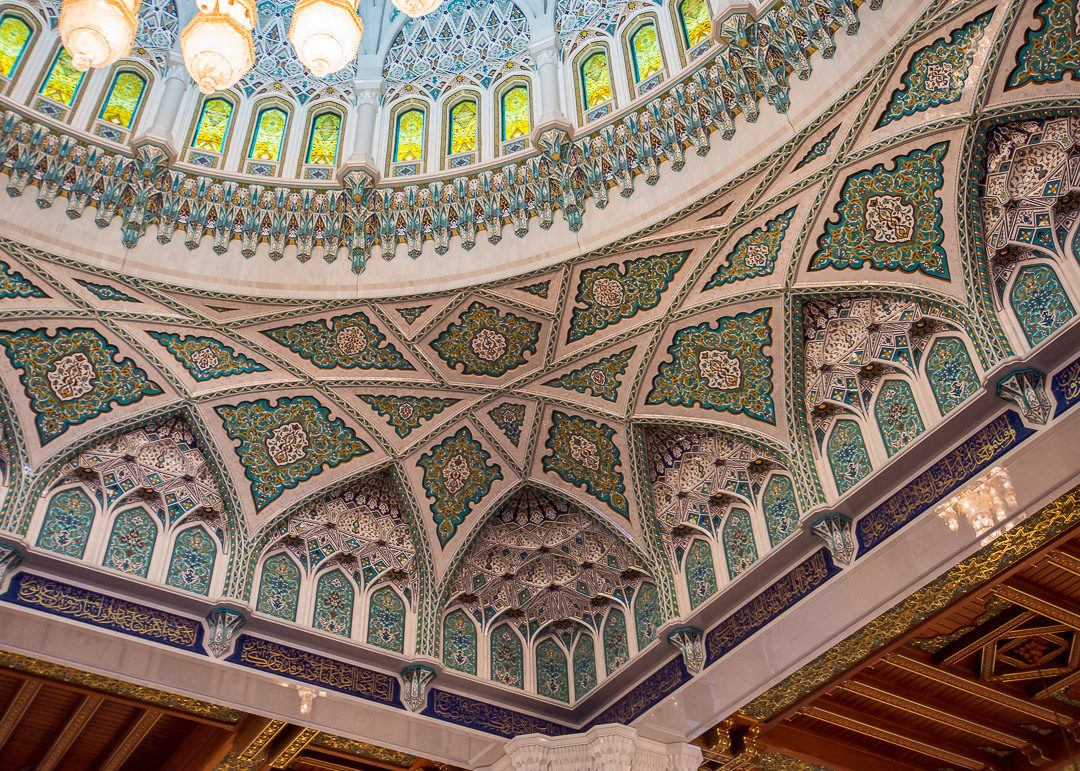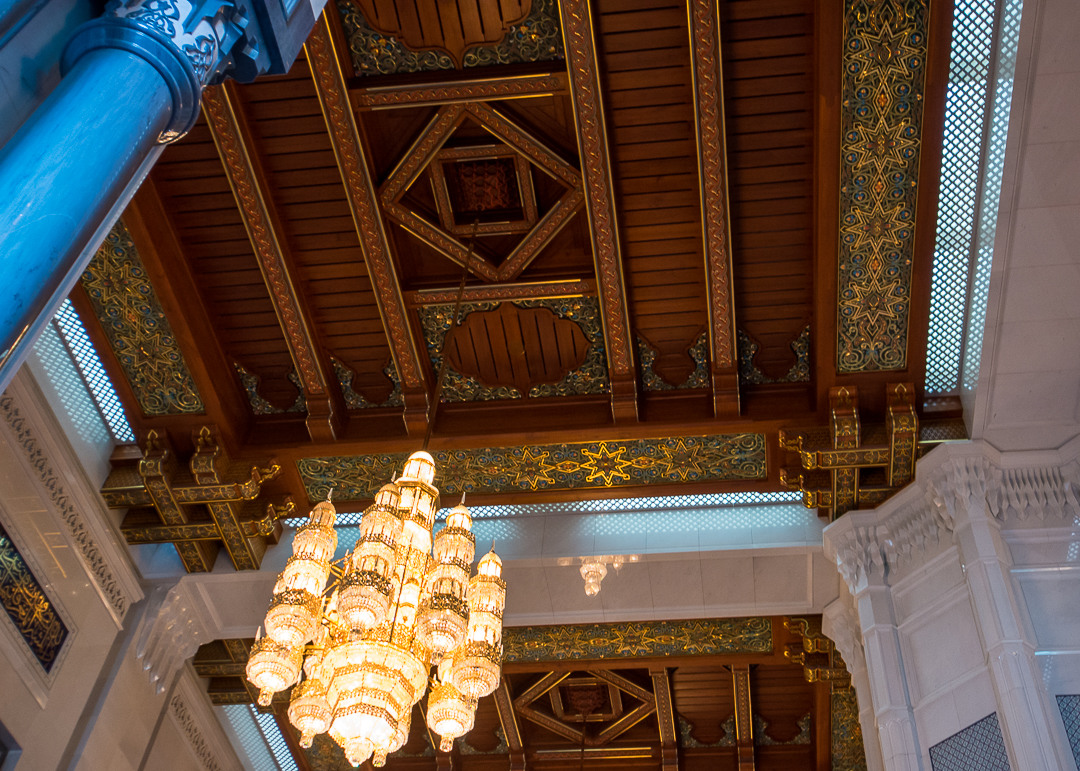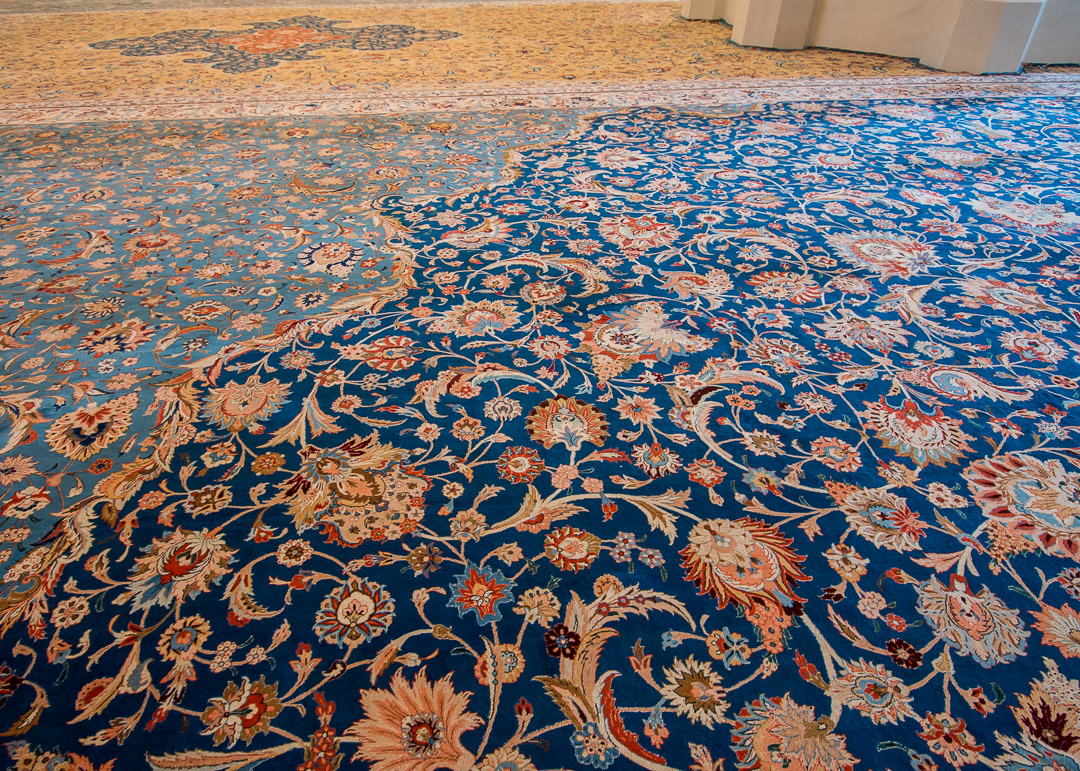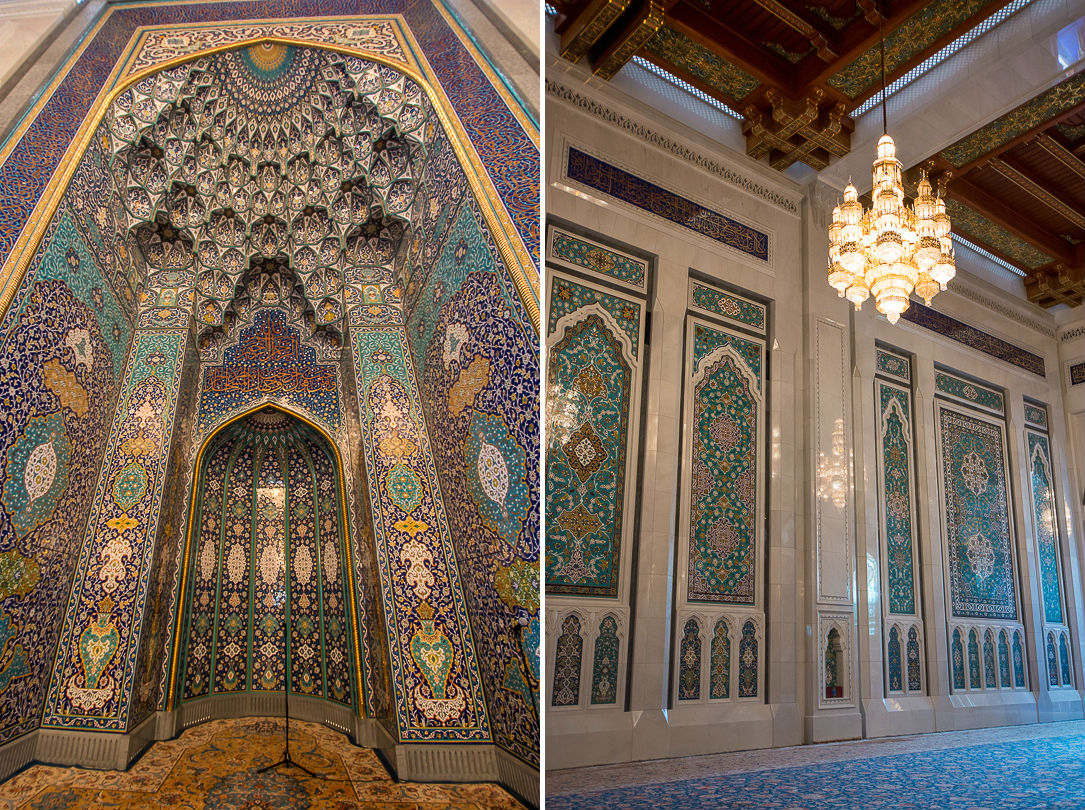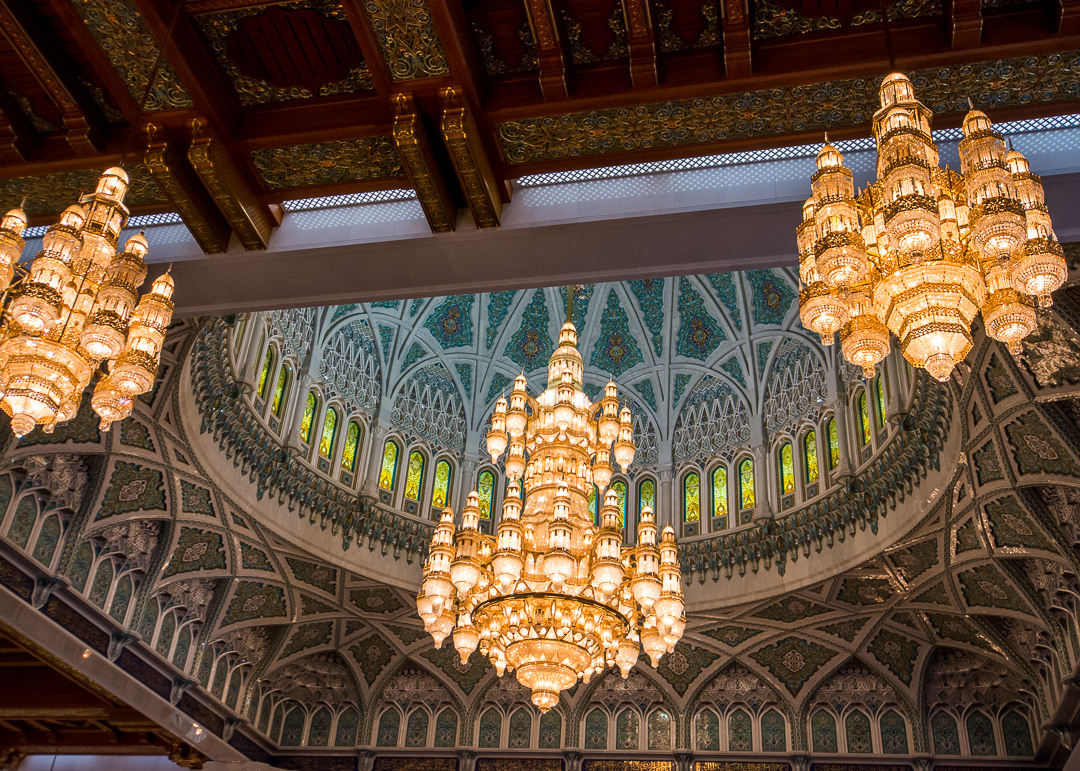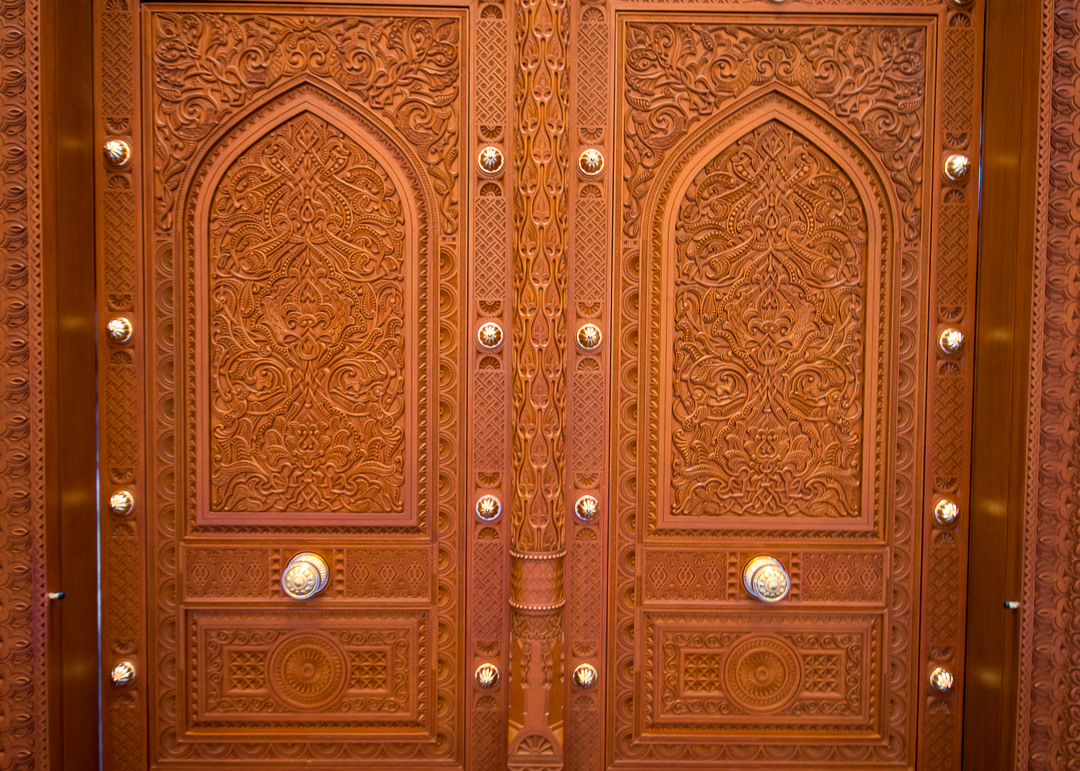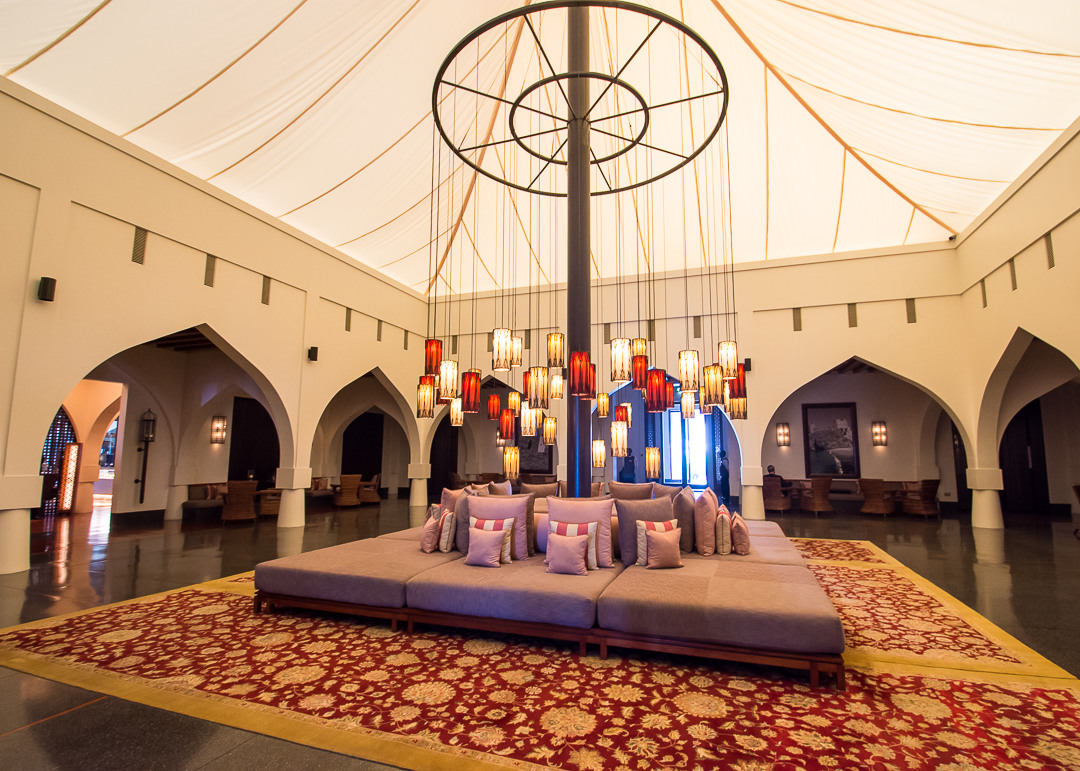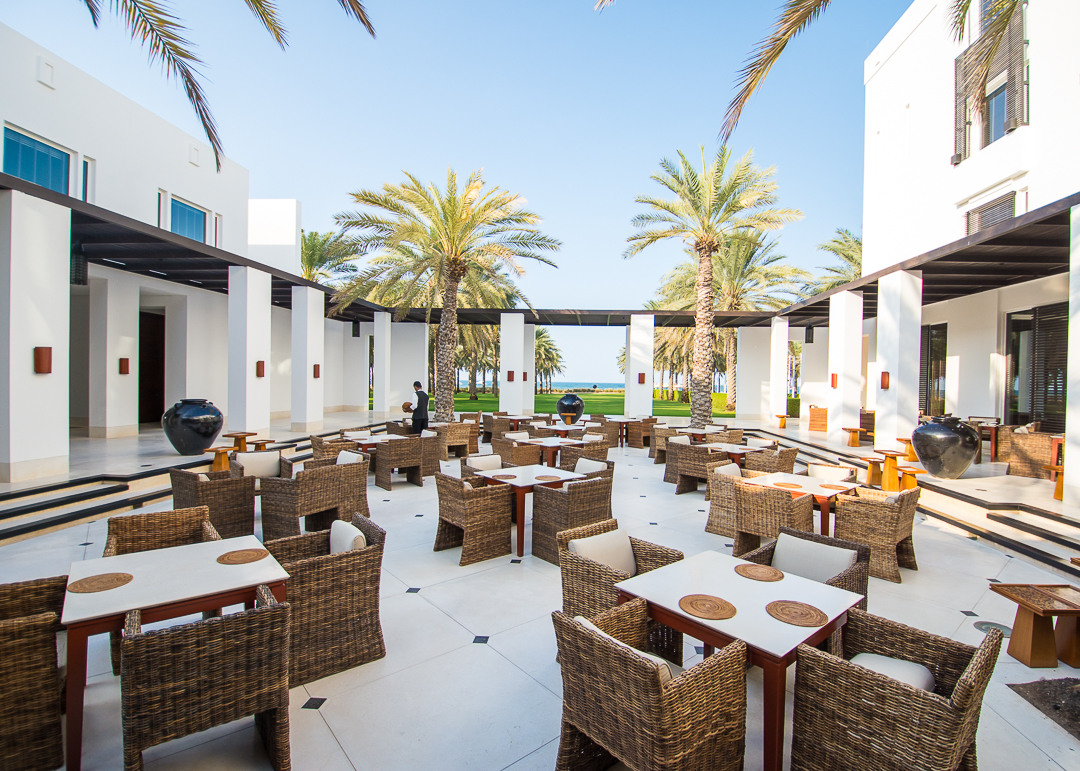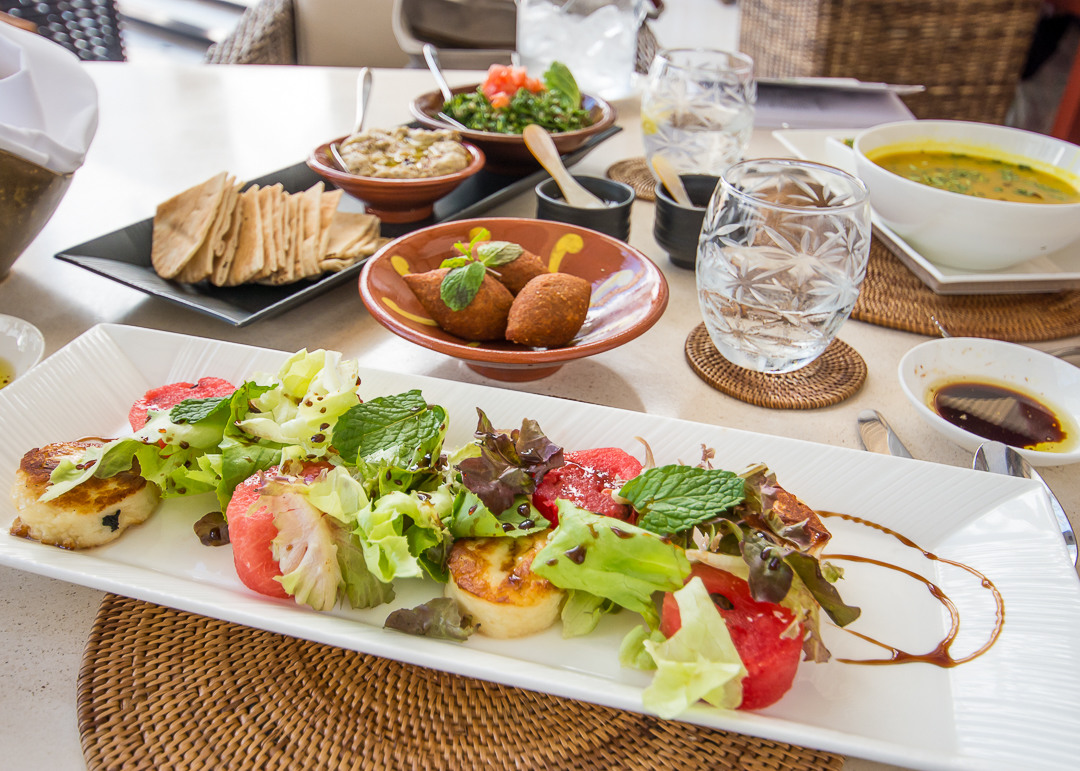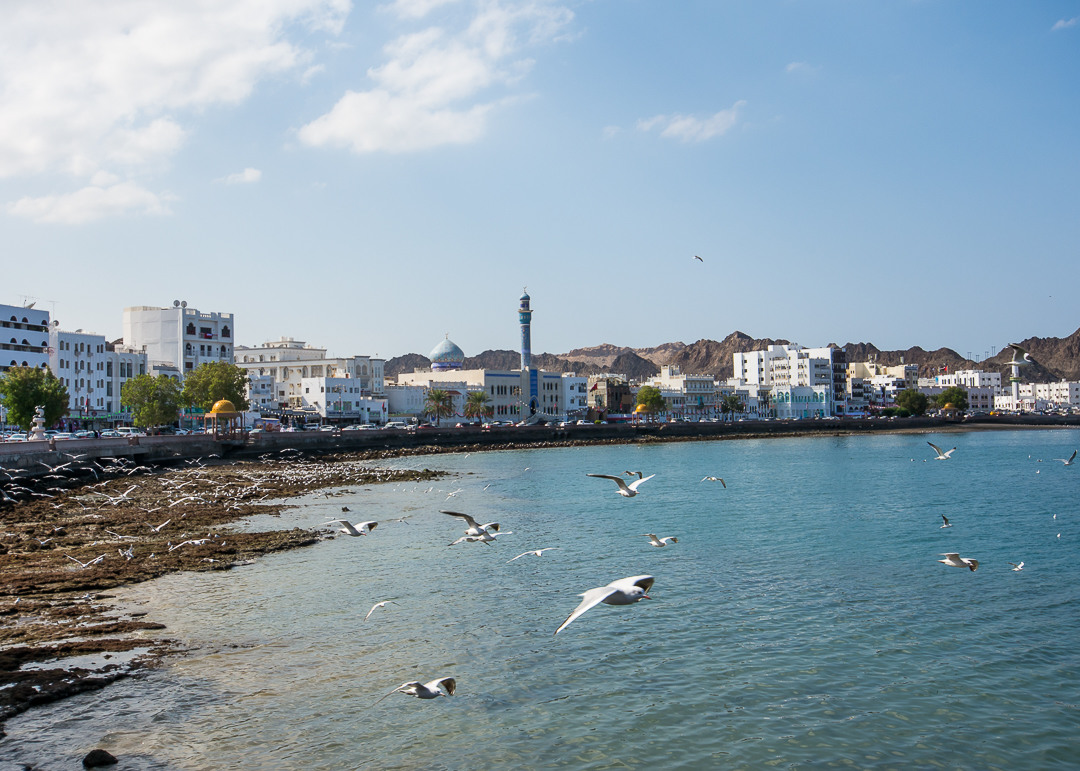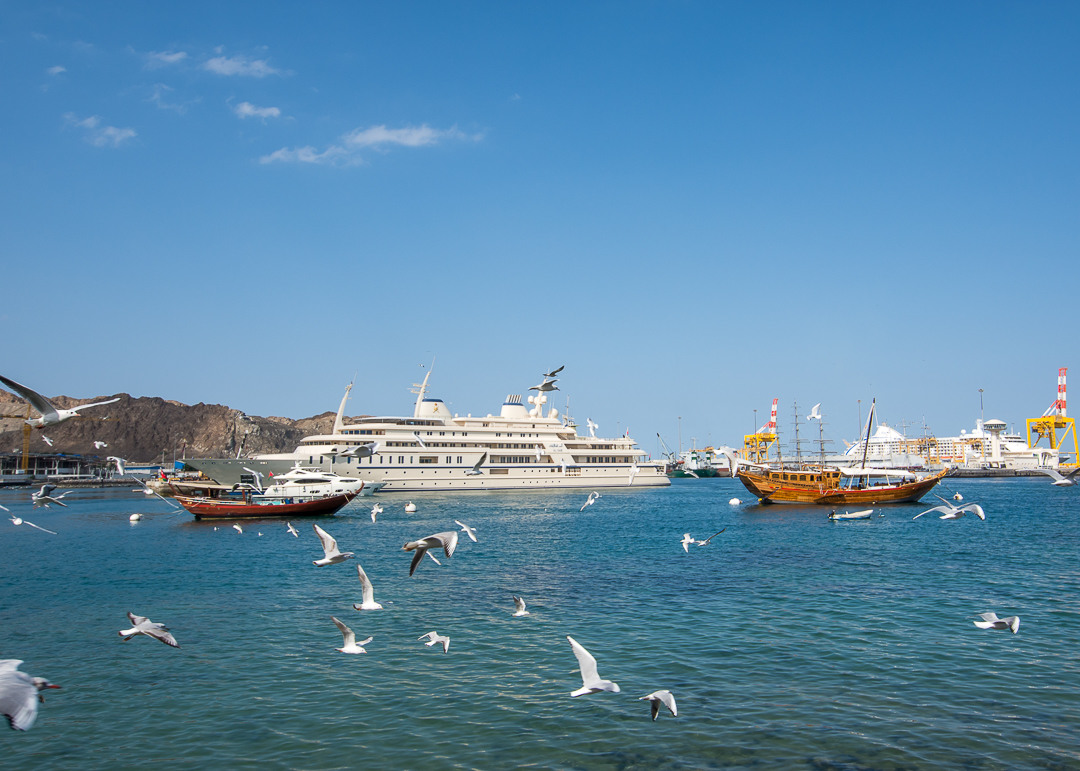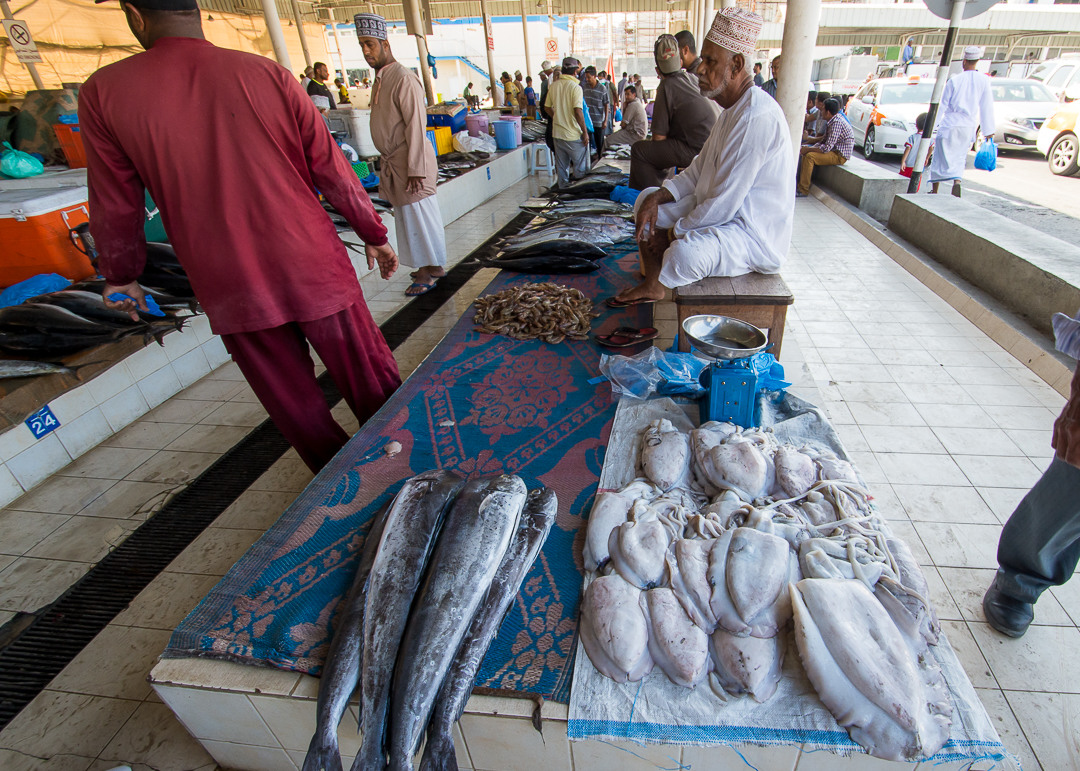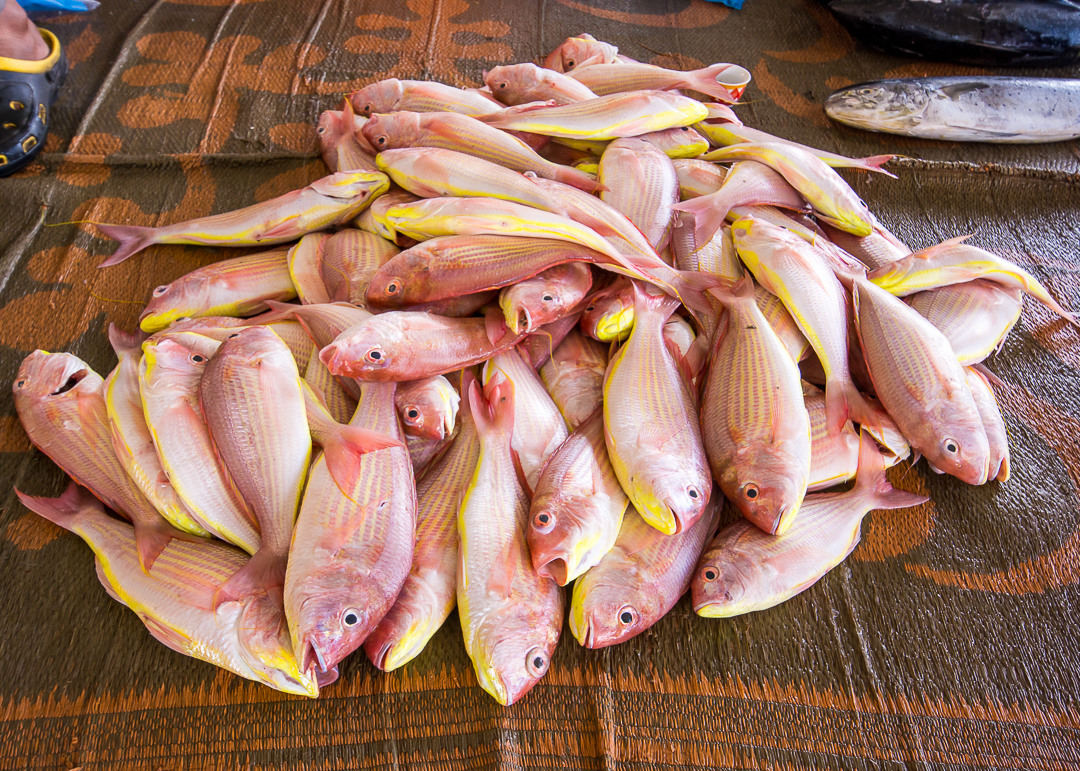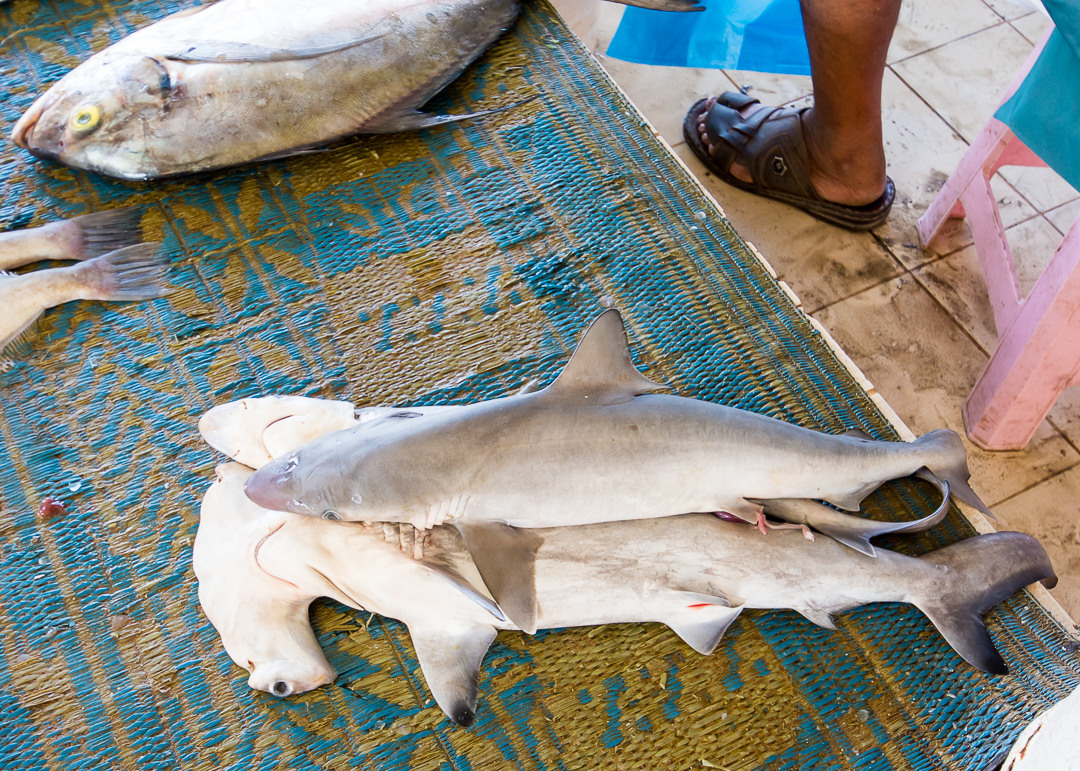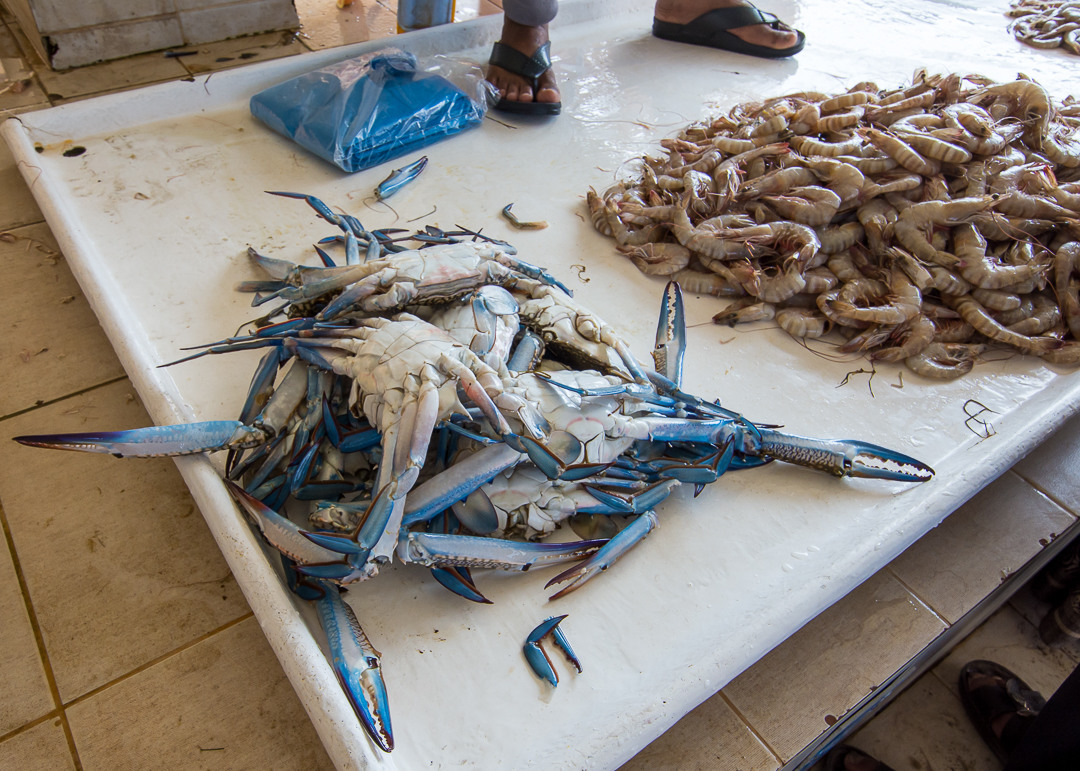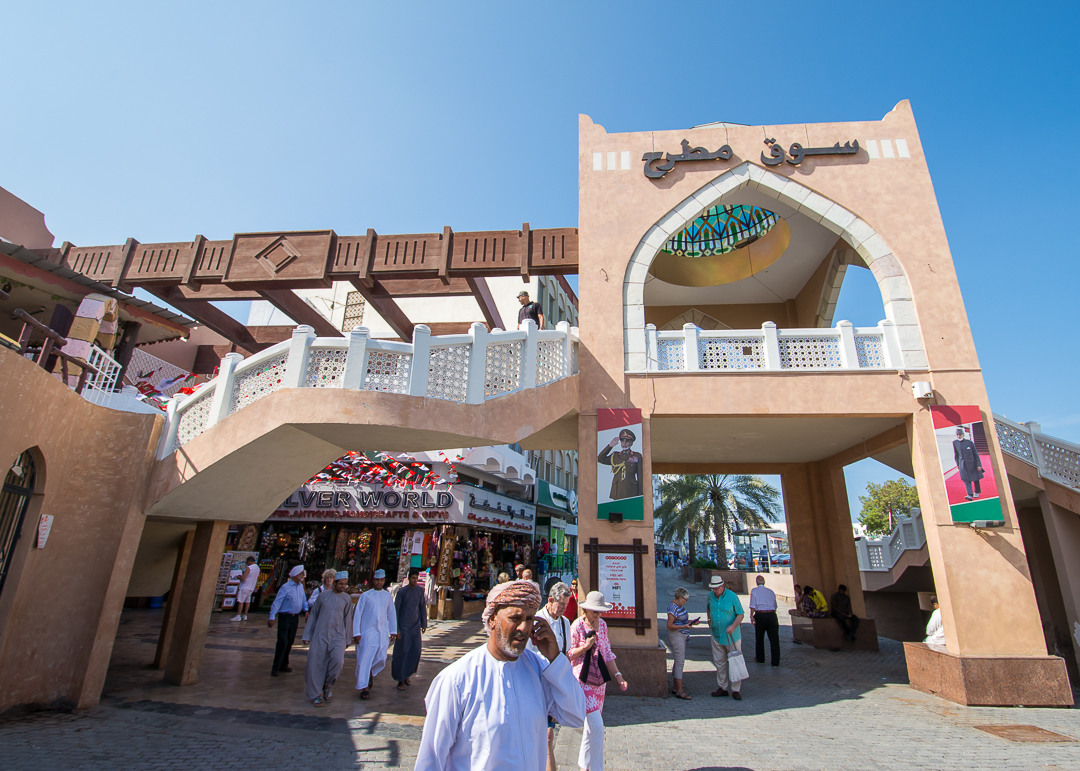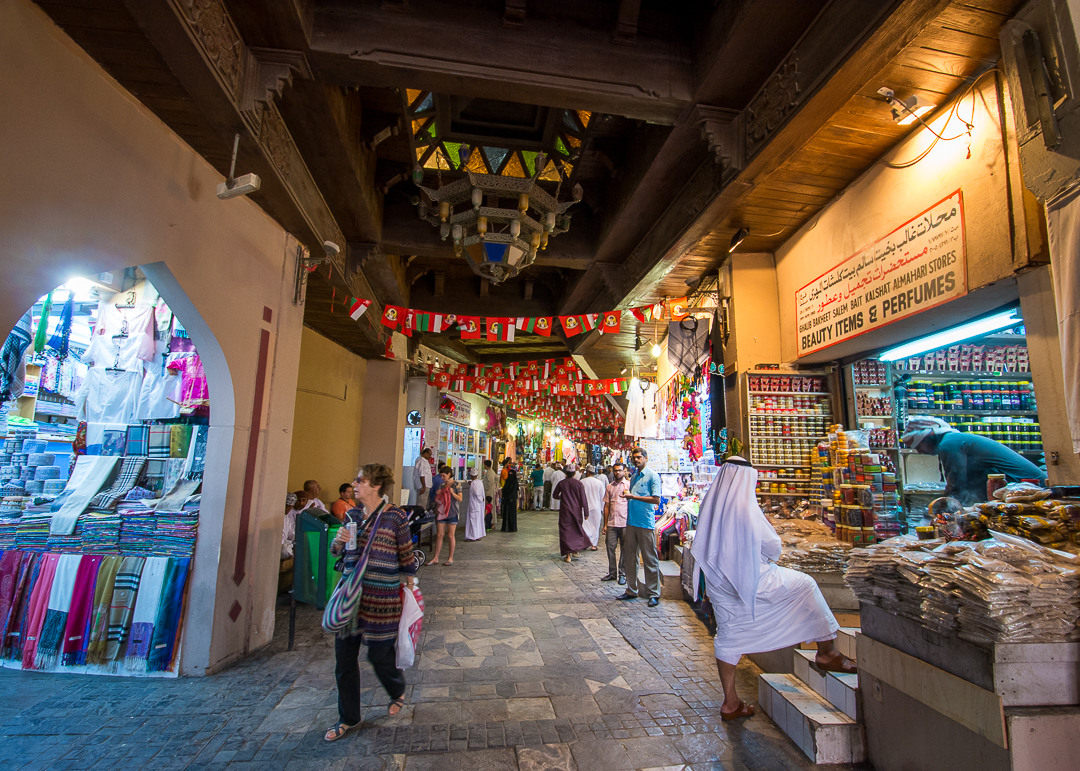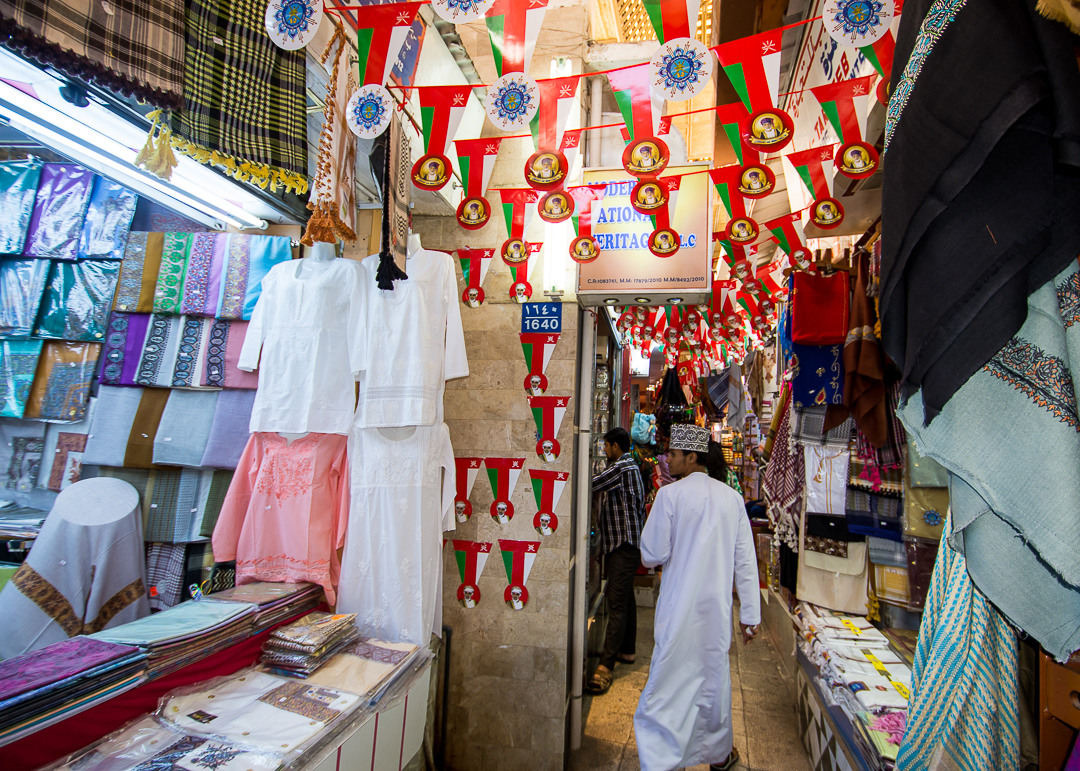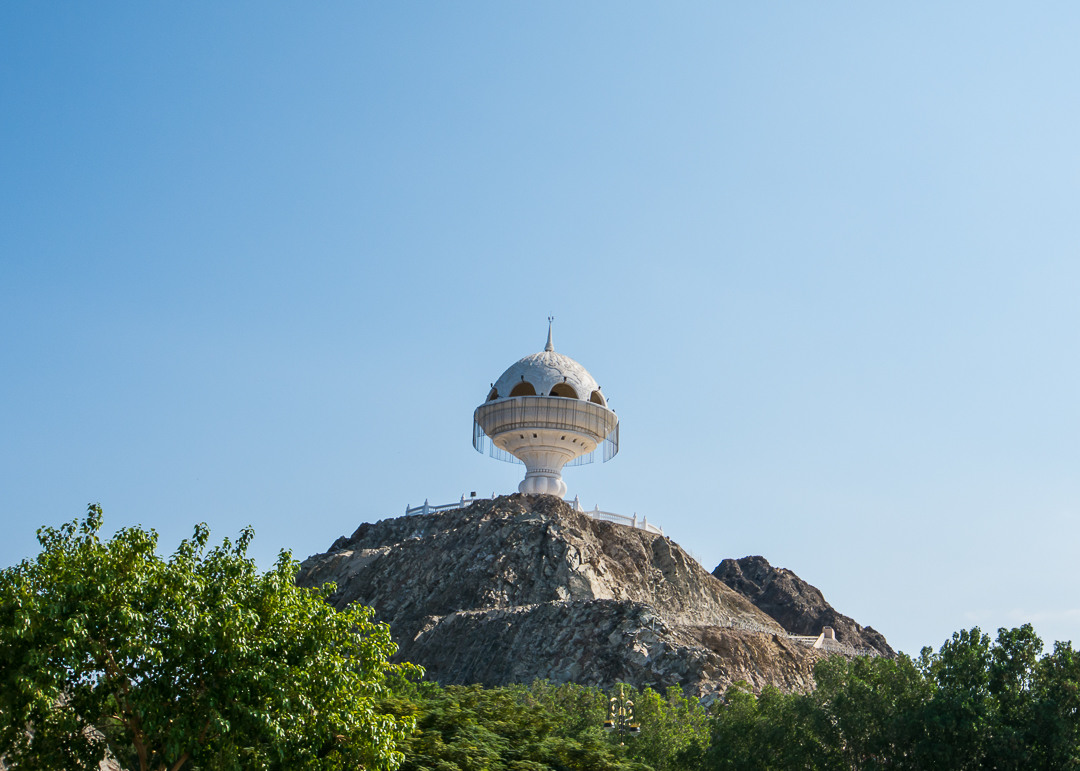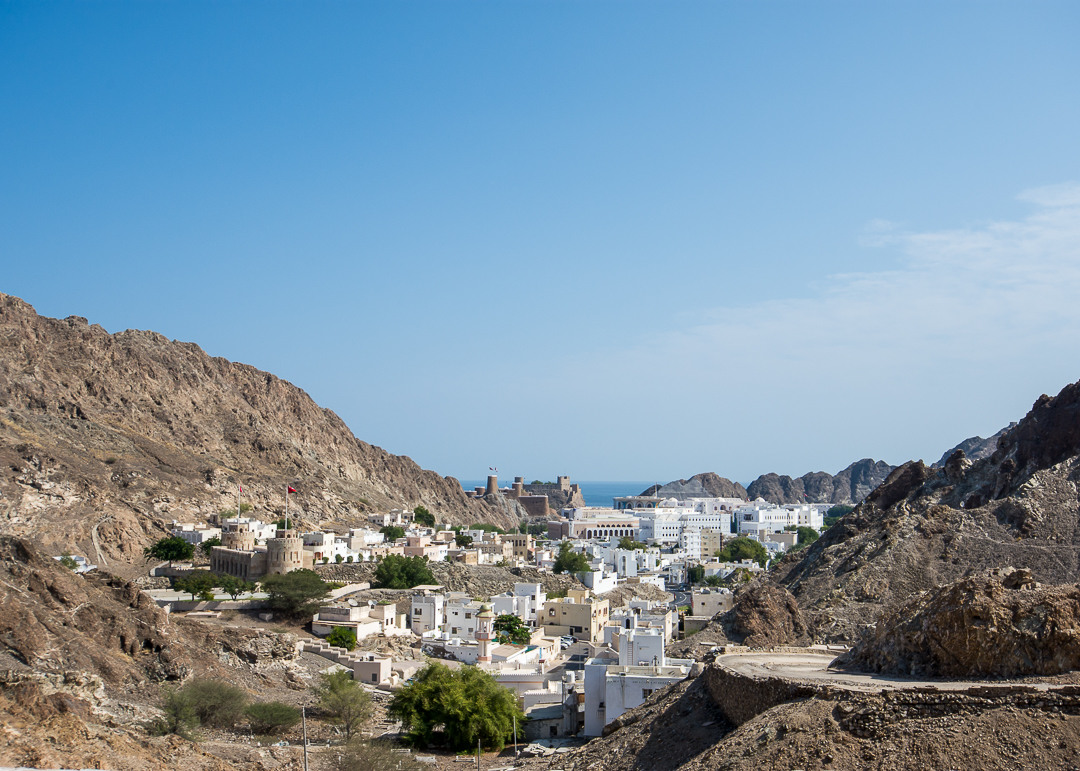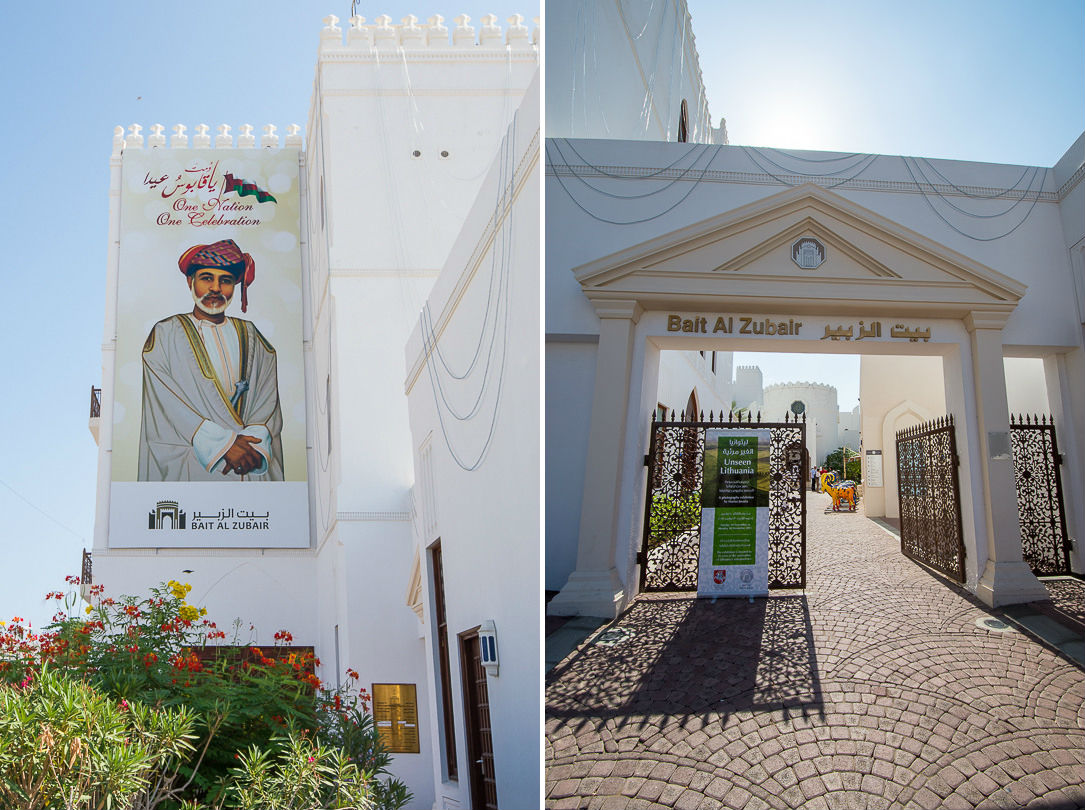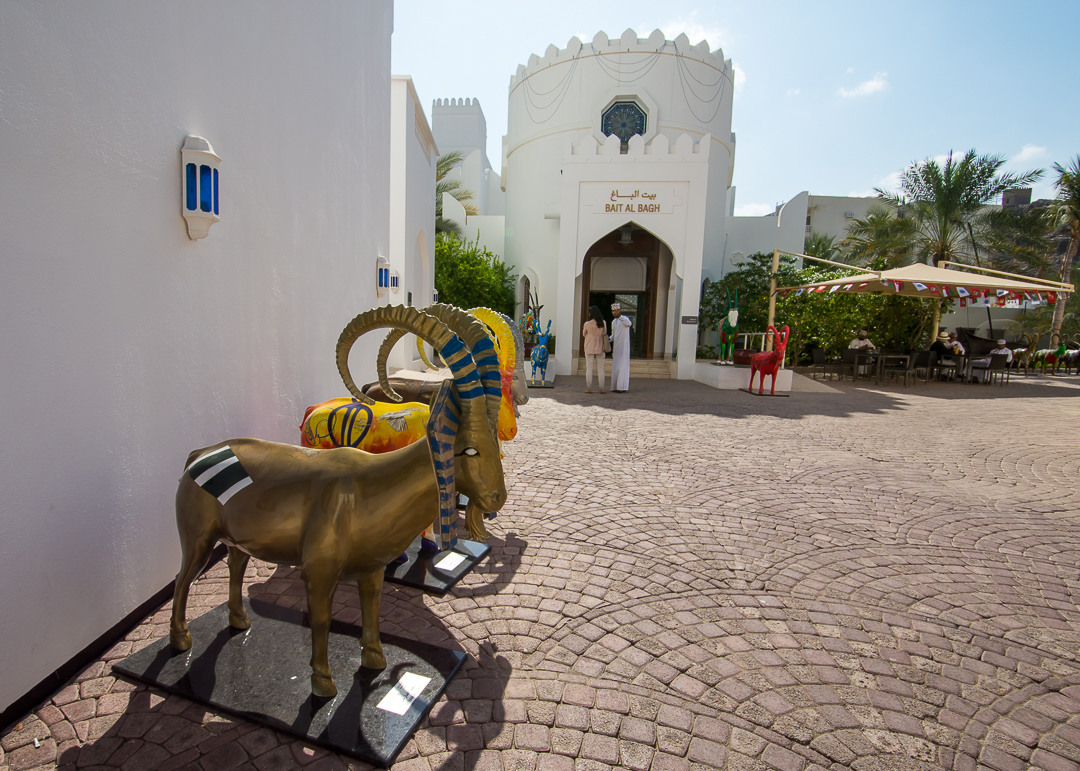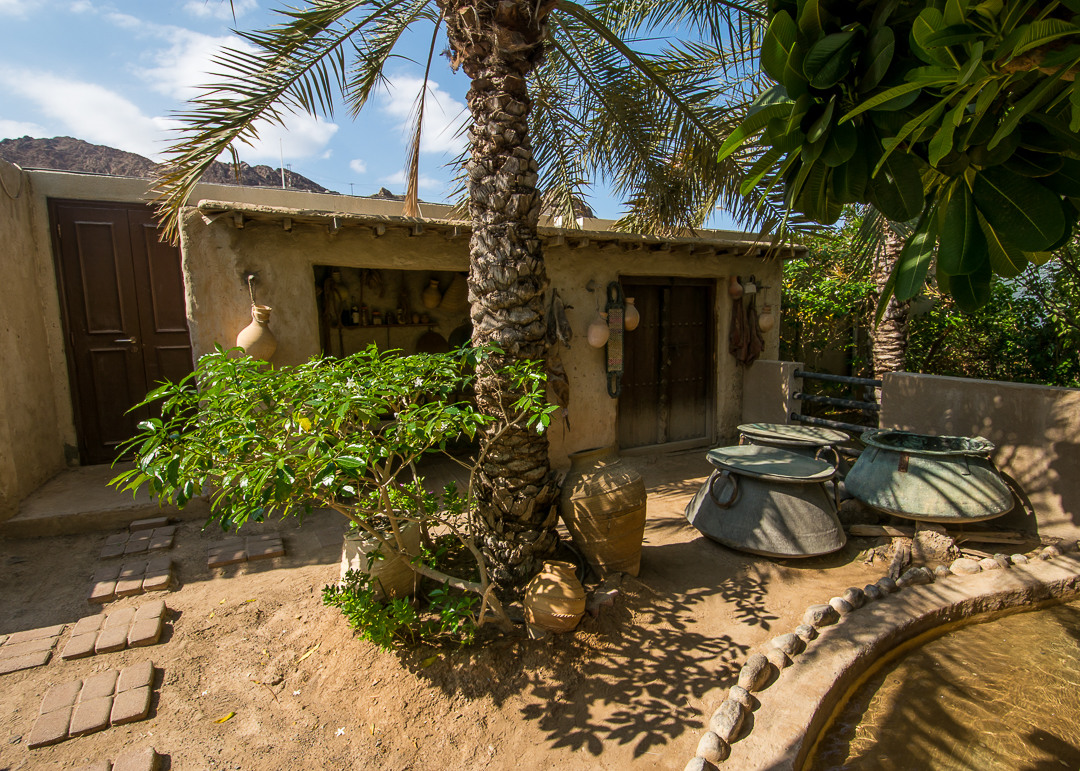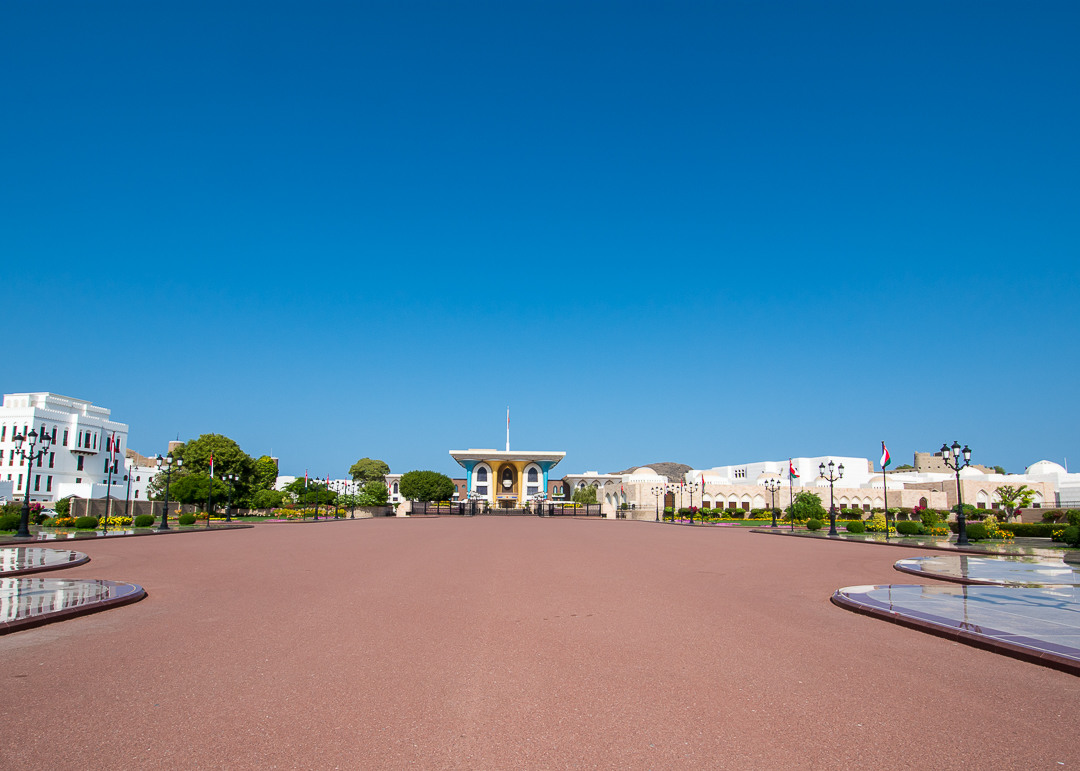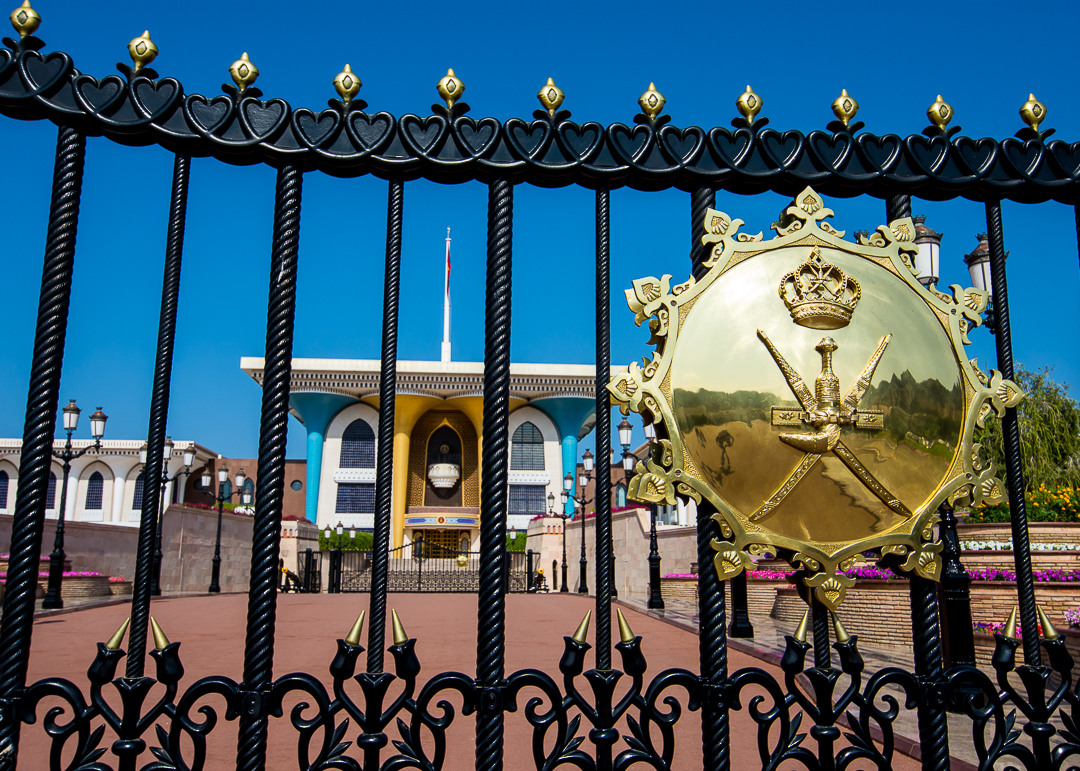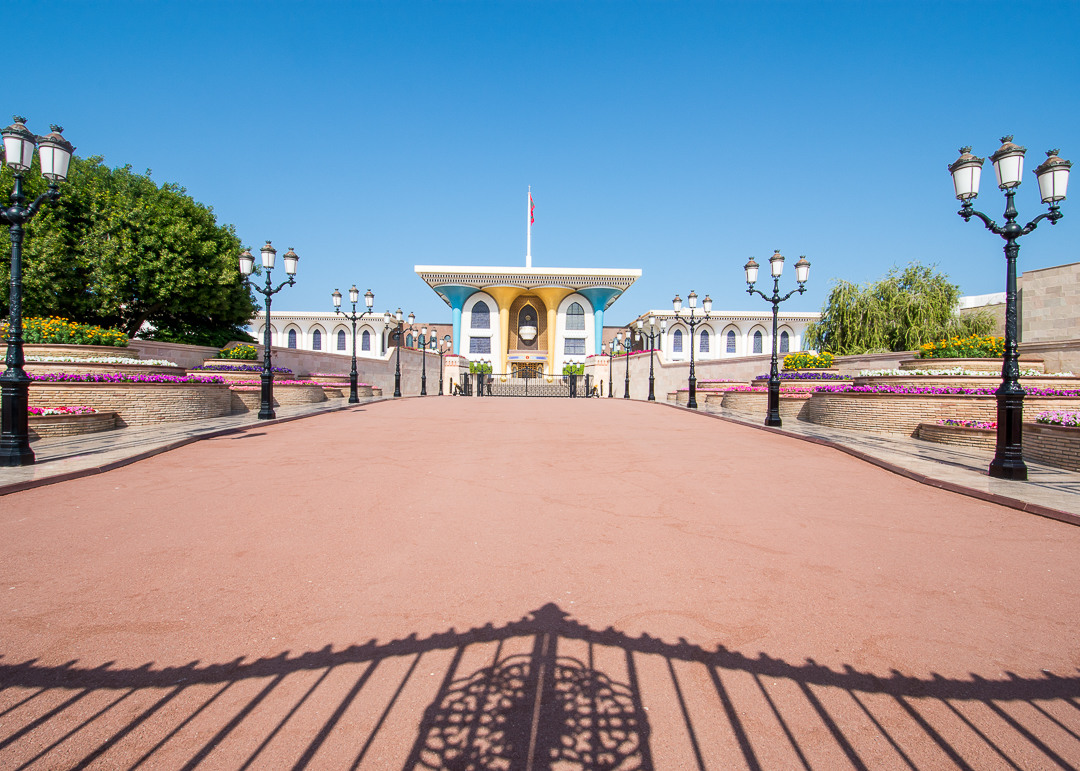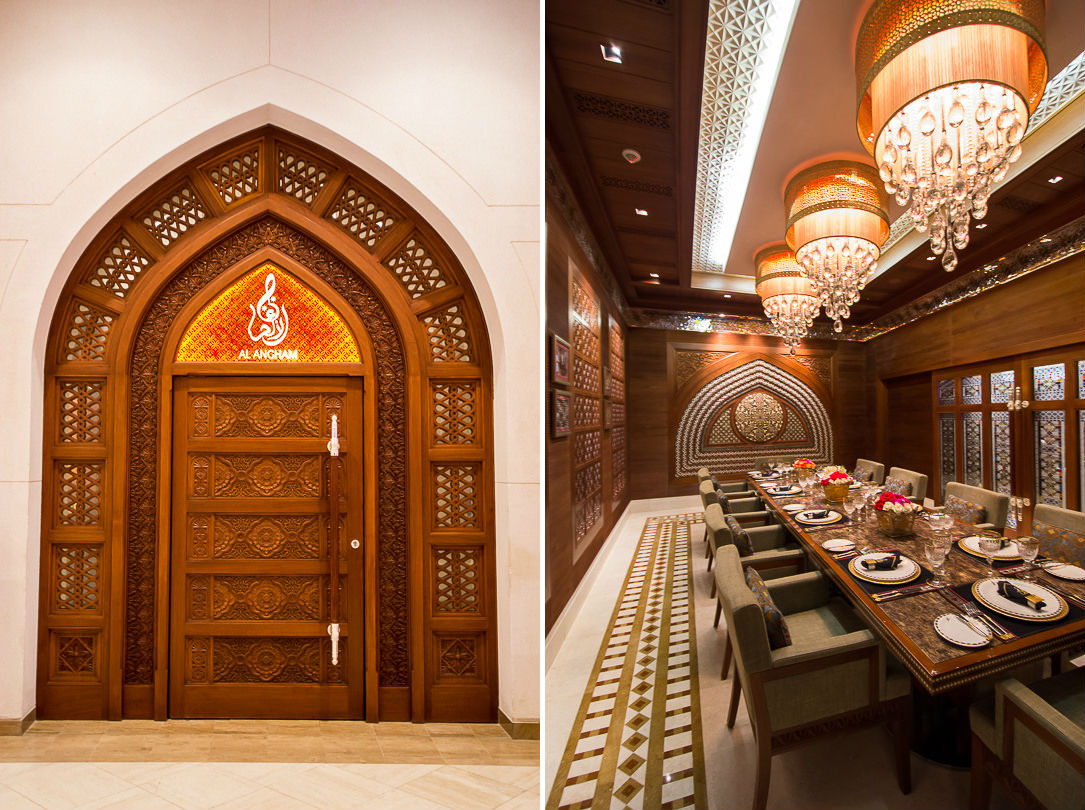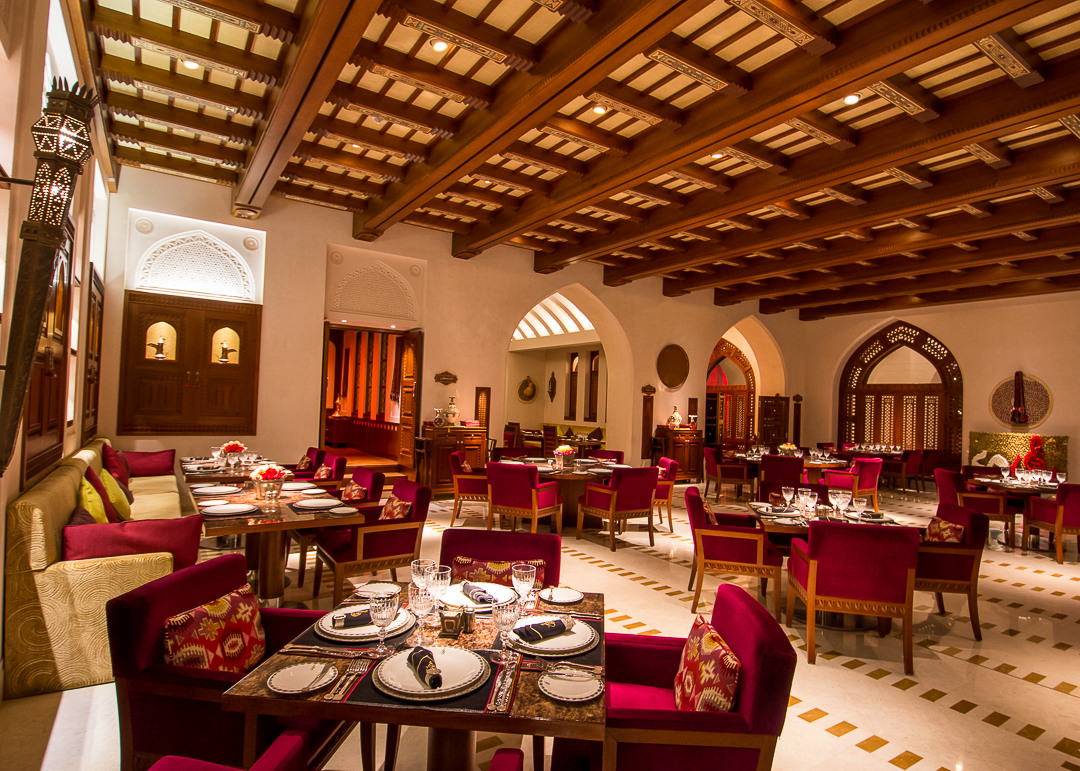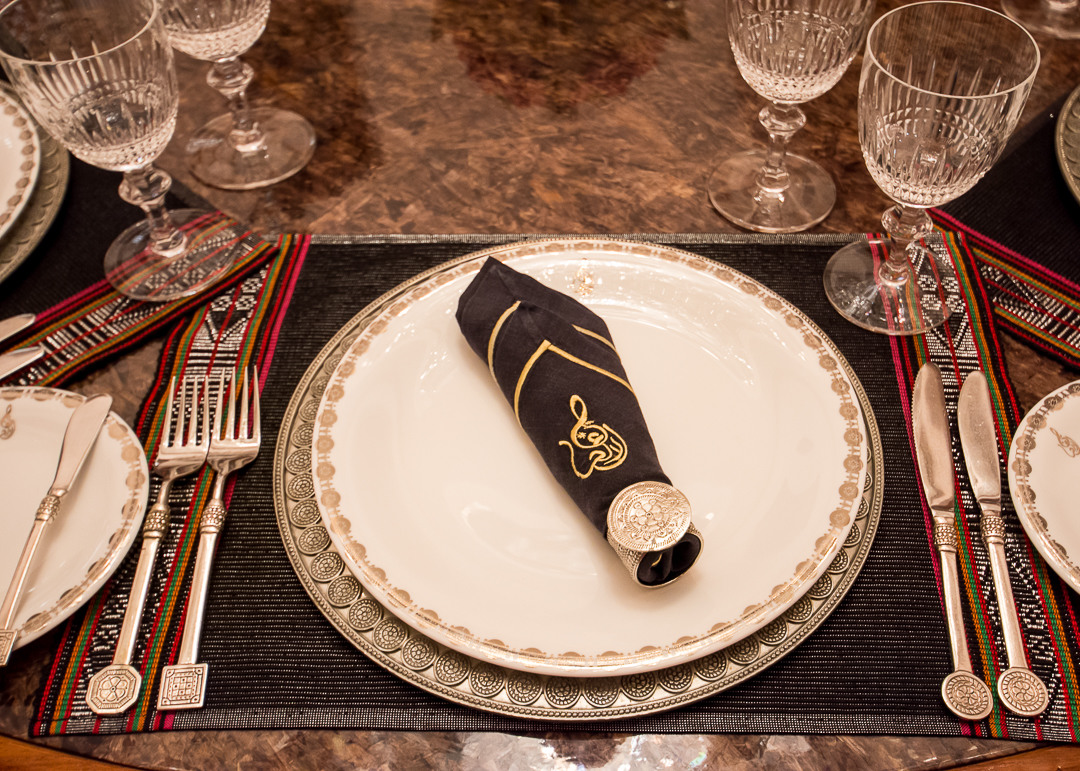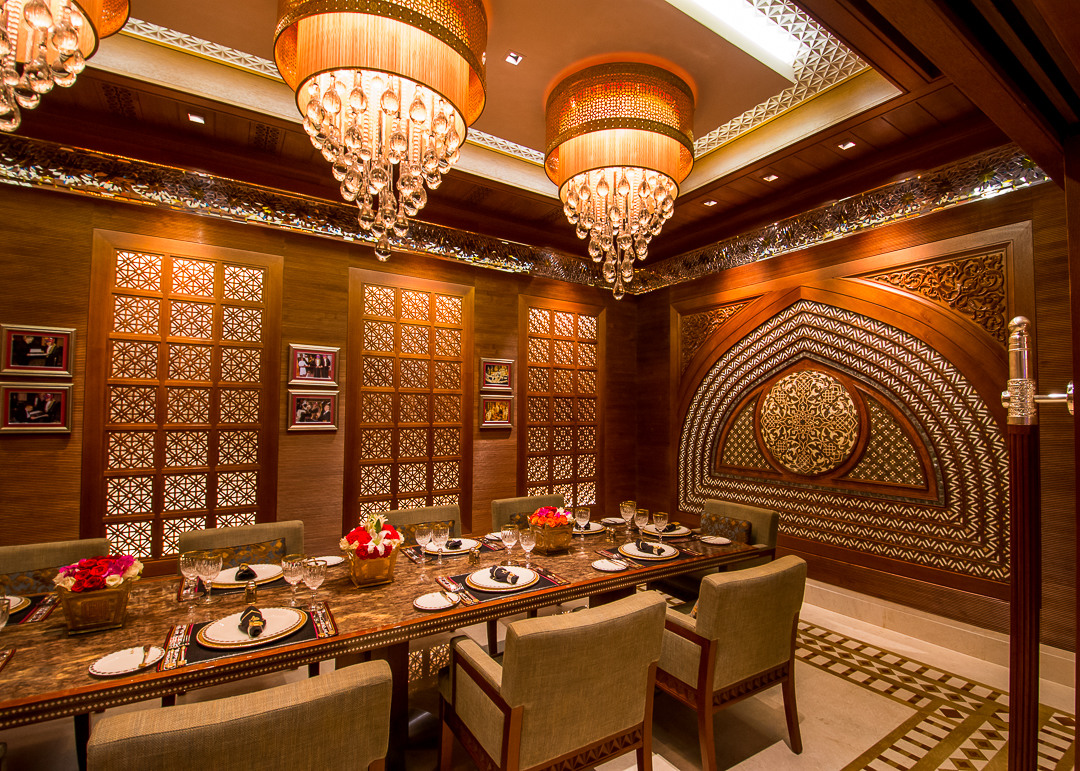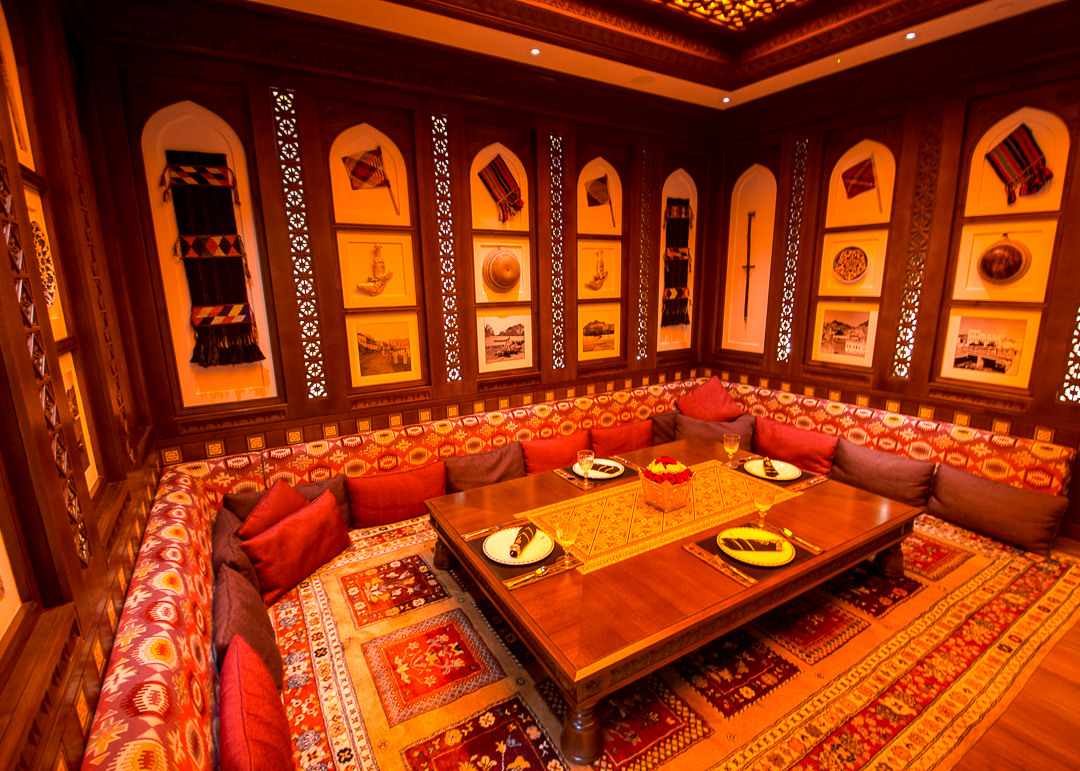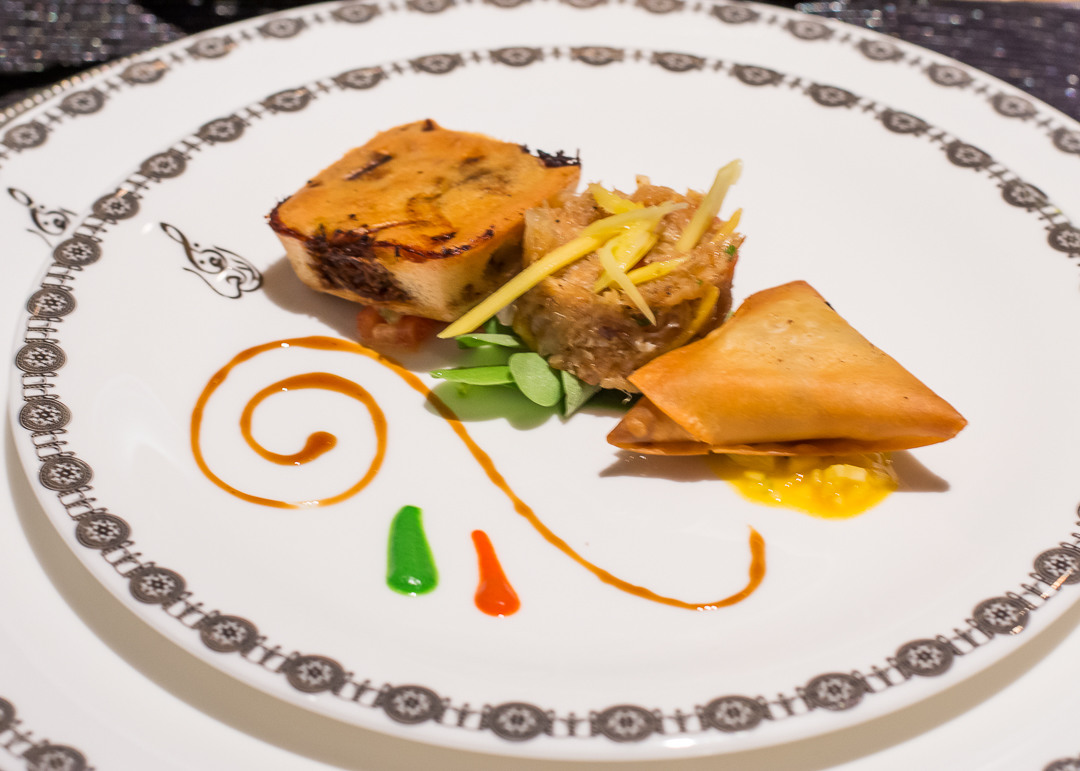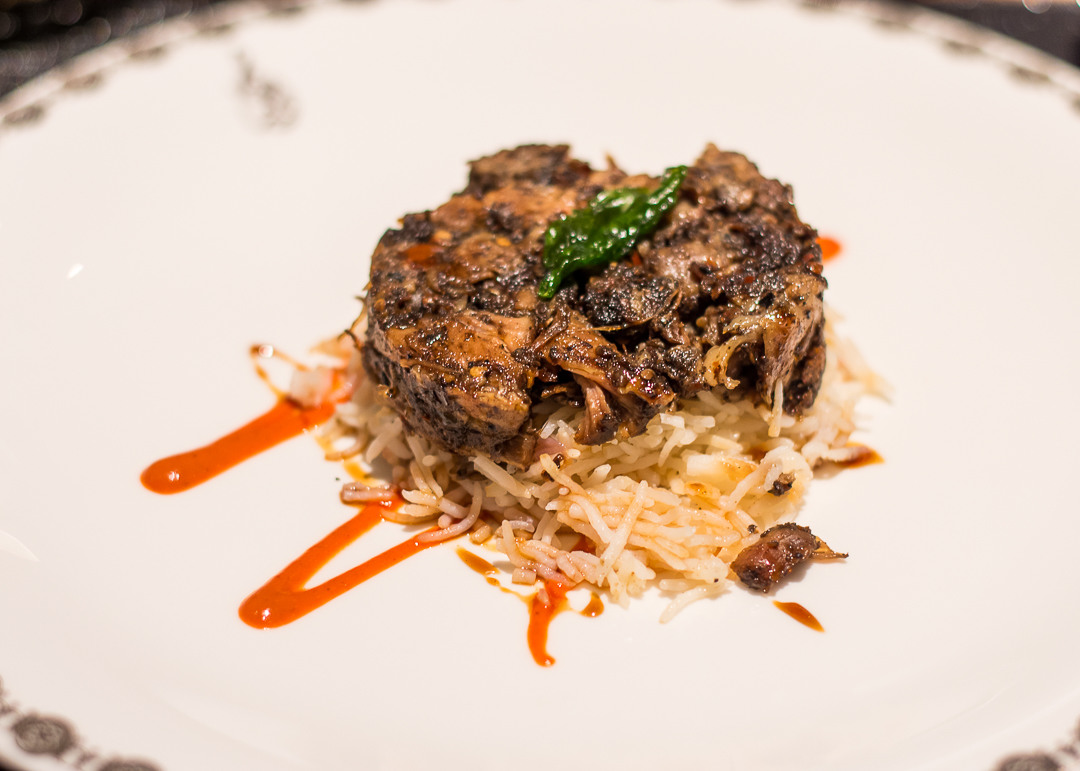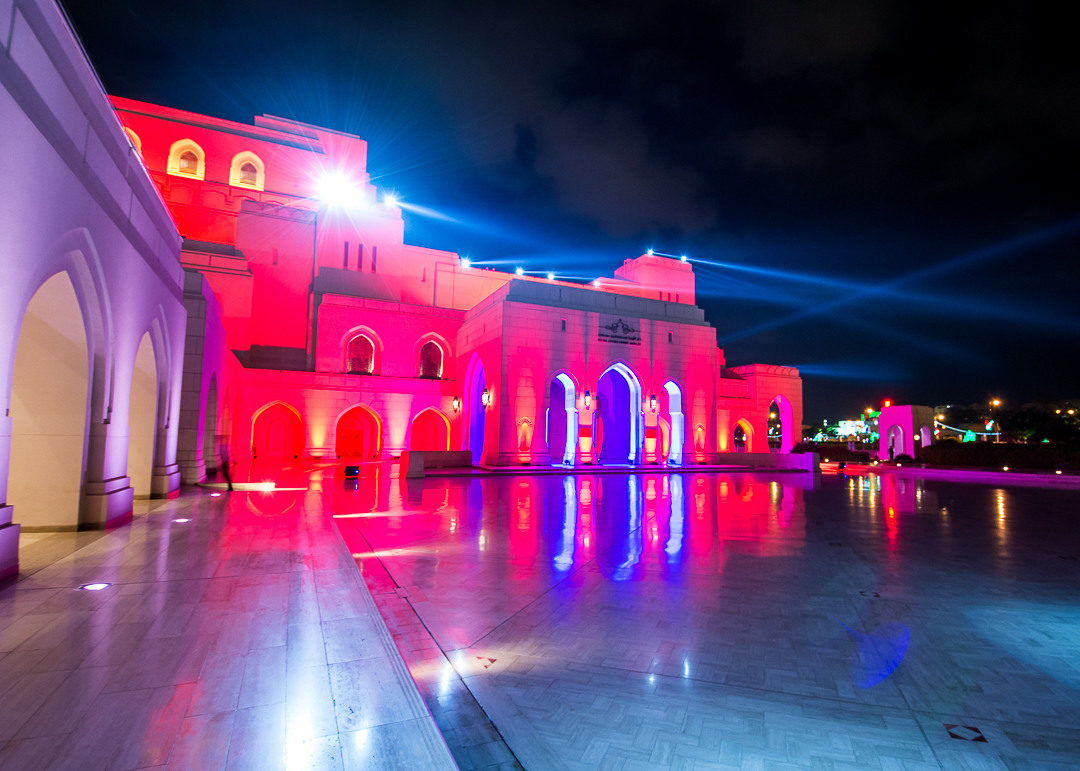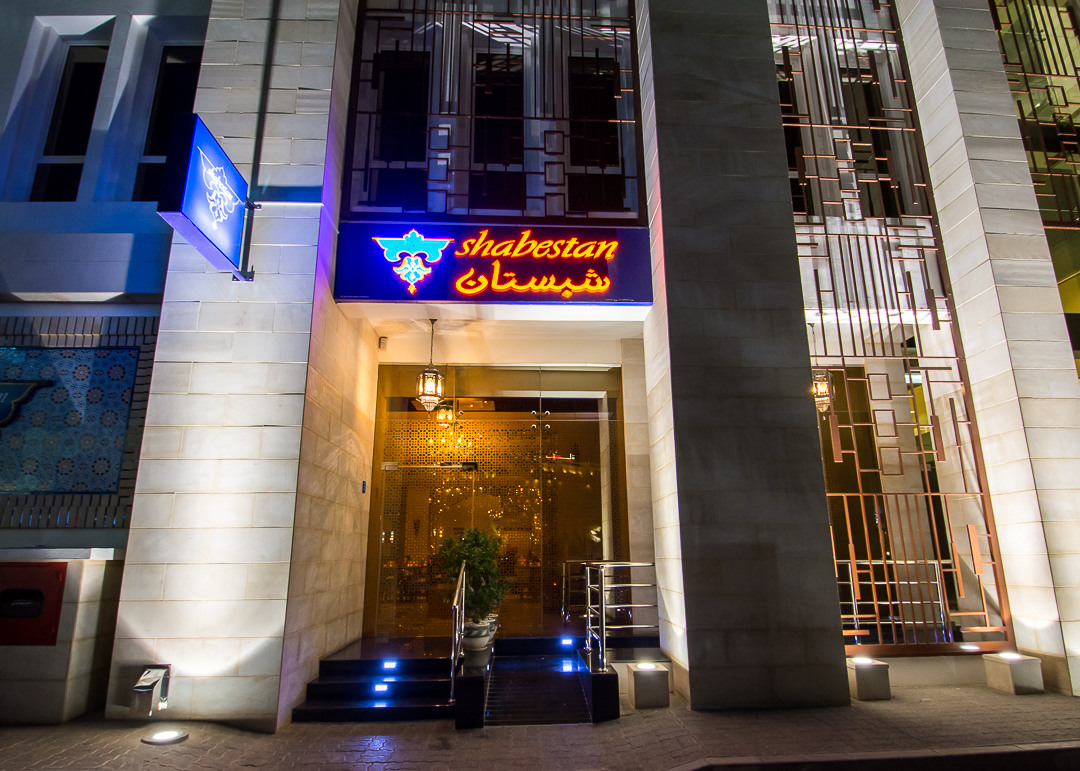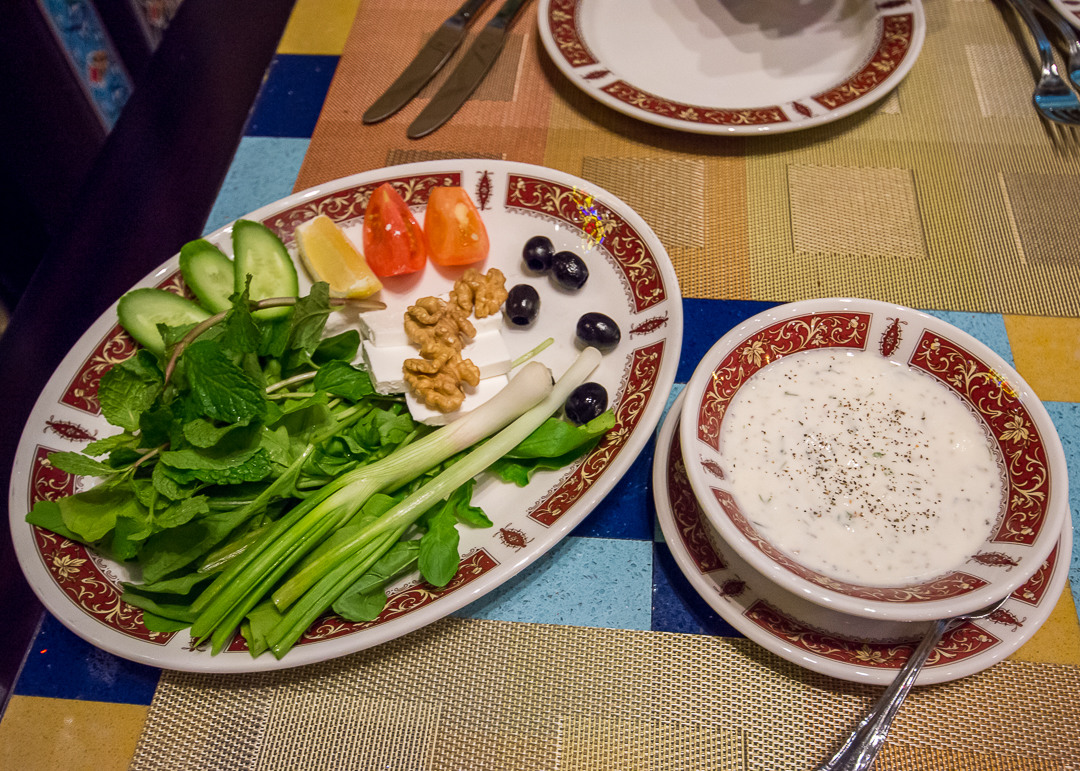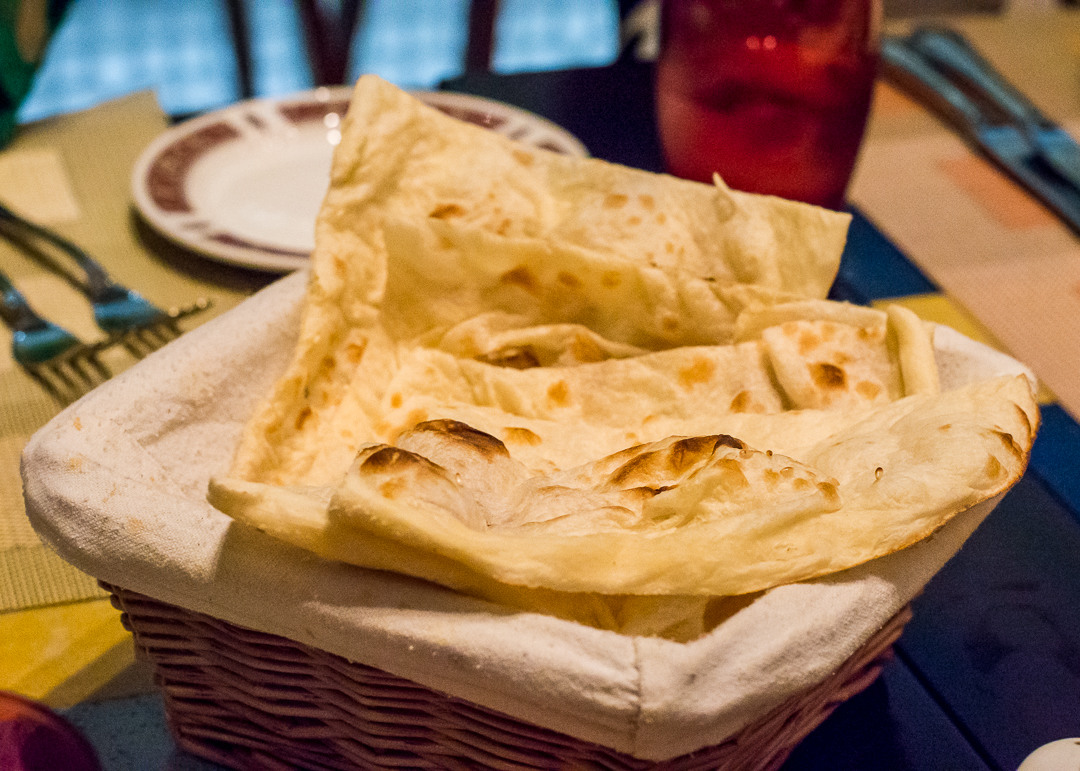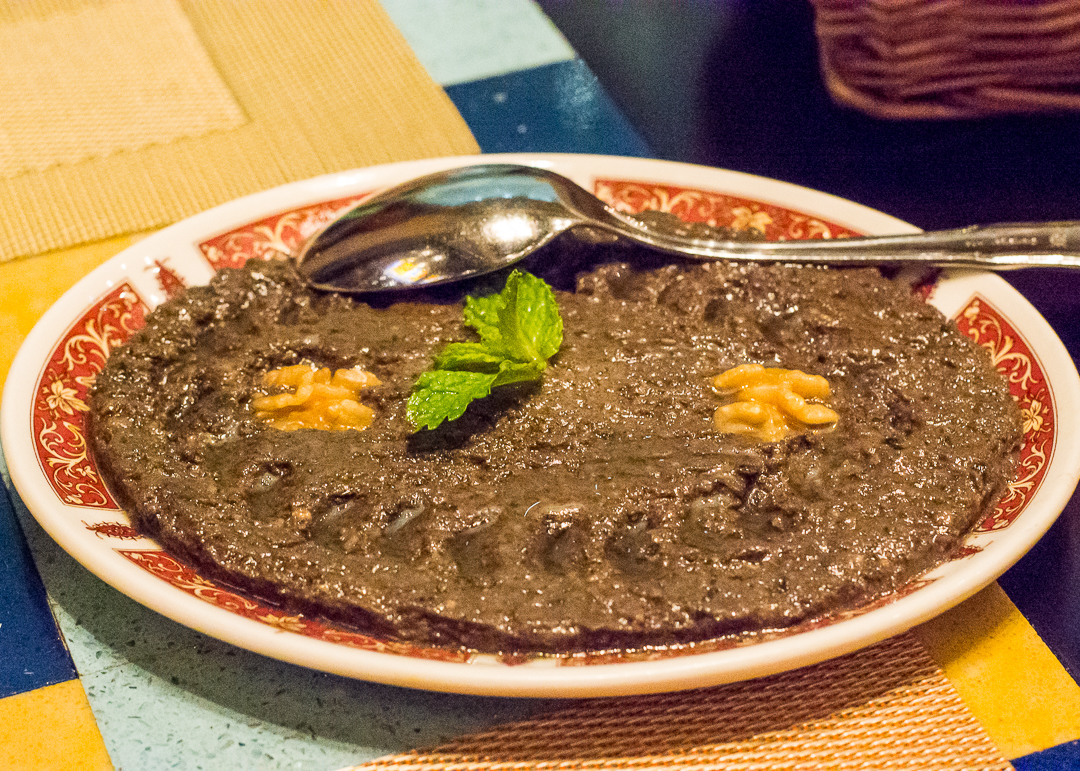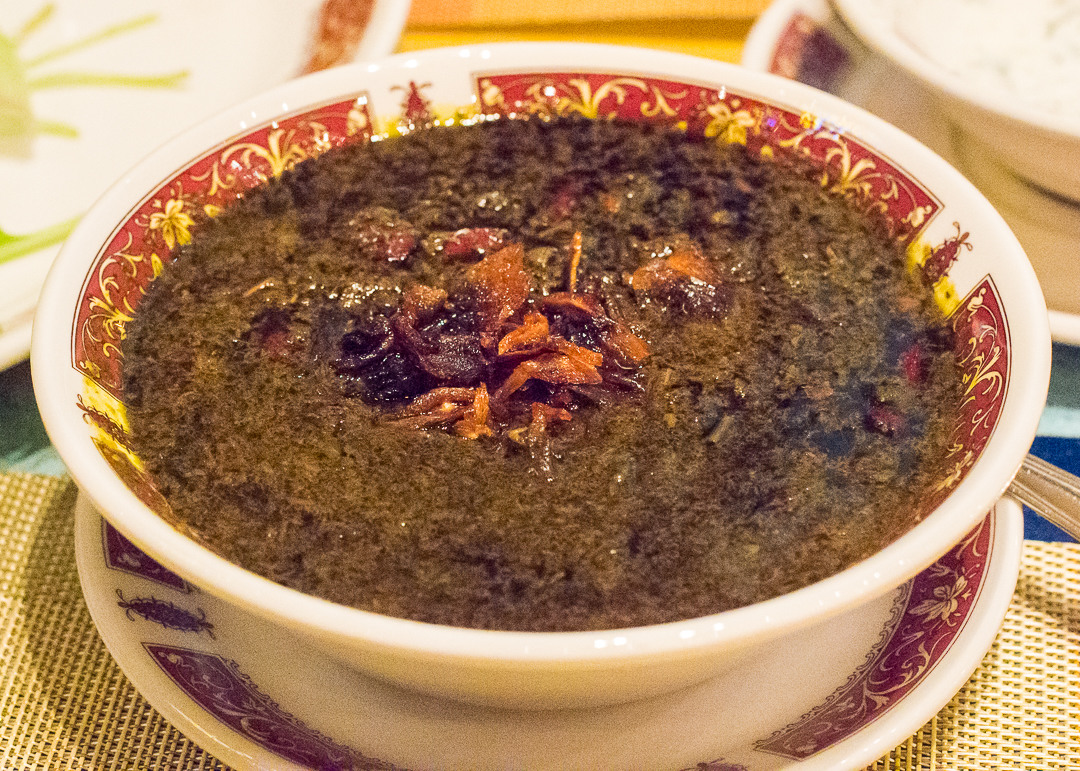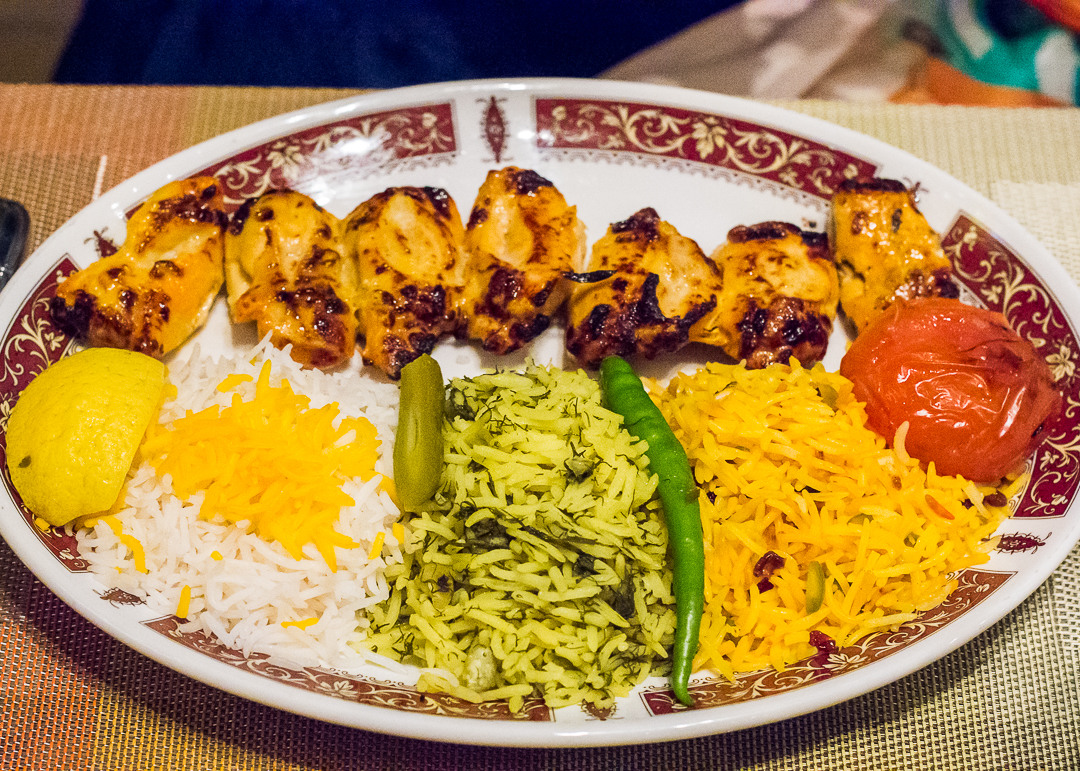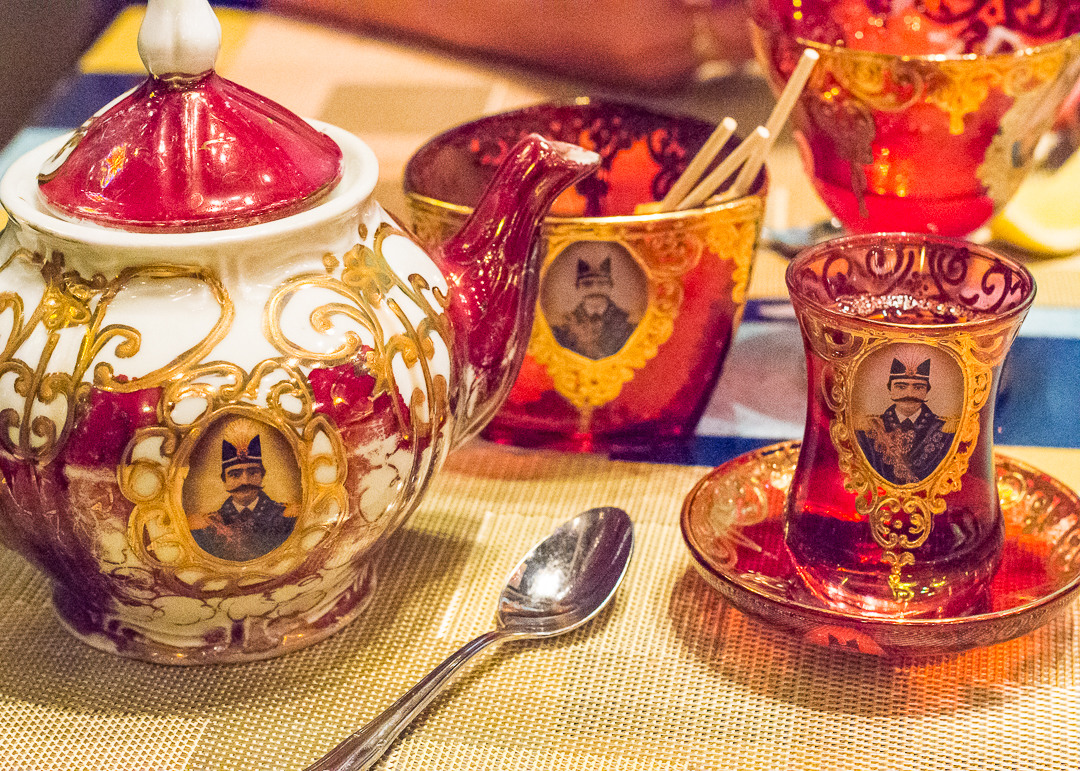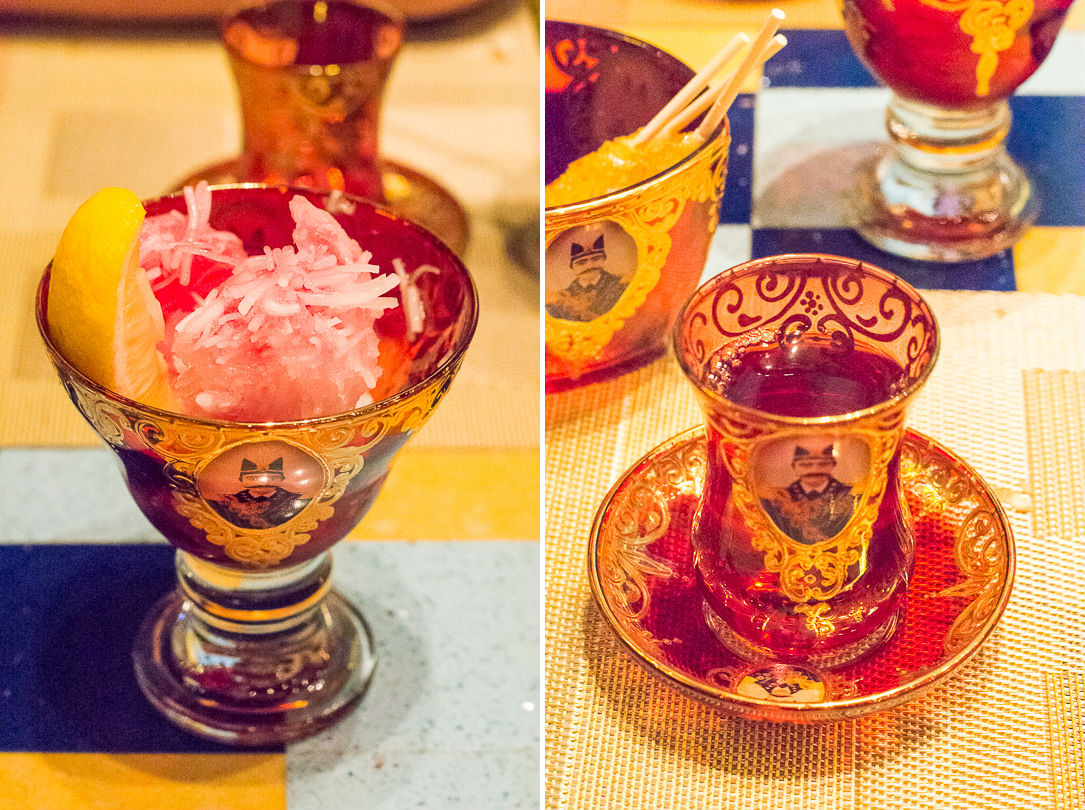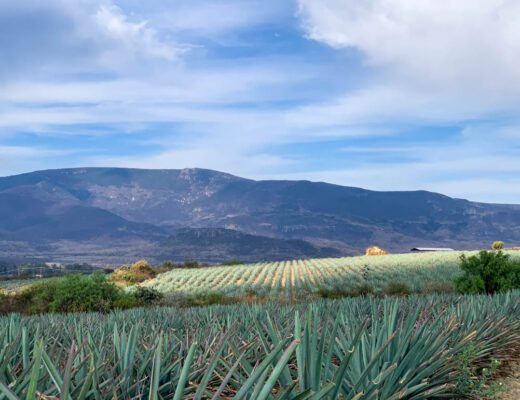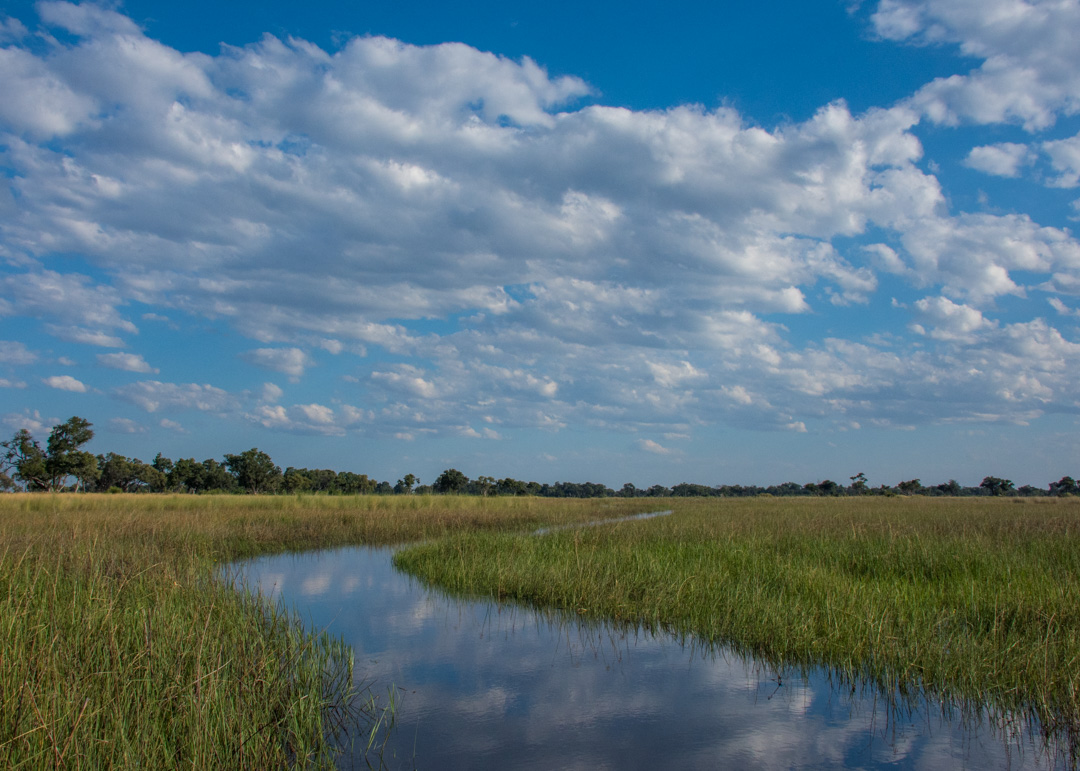It would be a shame to let the string of unrests affecting the Middle East overshadow the entire region as there are so many beautiful and unique jewels to explore in total safety. While everyone is familiar with ritzy Dubai, few have ventured to its neighbor, the Sultanate of Oman, a rapidly-developing nation widely considered the Middle East’s best kept secret.
Any visit to Oman starts in its bustling capital, Muscat, which has been experiencing a booming modernization since 1970 when Sultan Qaboos came into power and started spending Oman’s oil wealth. While much of the city is unequivocally modern, the Sultan’s respect for tradition has steered the construction away from the excesses and high-rise heavy architecture of its neighbors, resulting in an attractive and uniform city with a strong Arabic identity.
Al Khuwair district in Muscat city center with the Grand Mosque in the background.
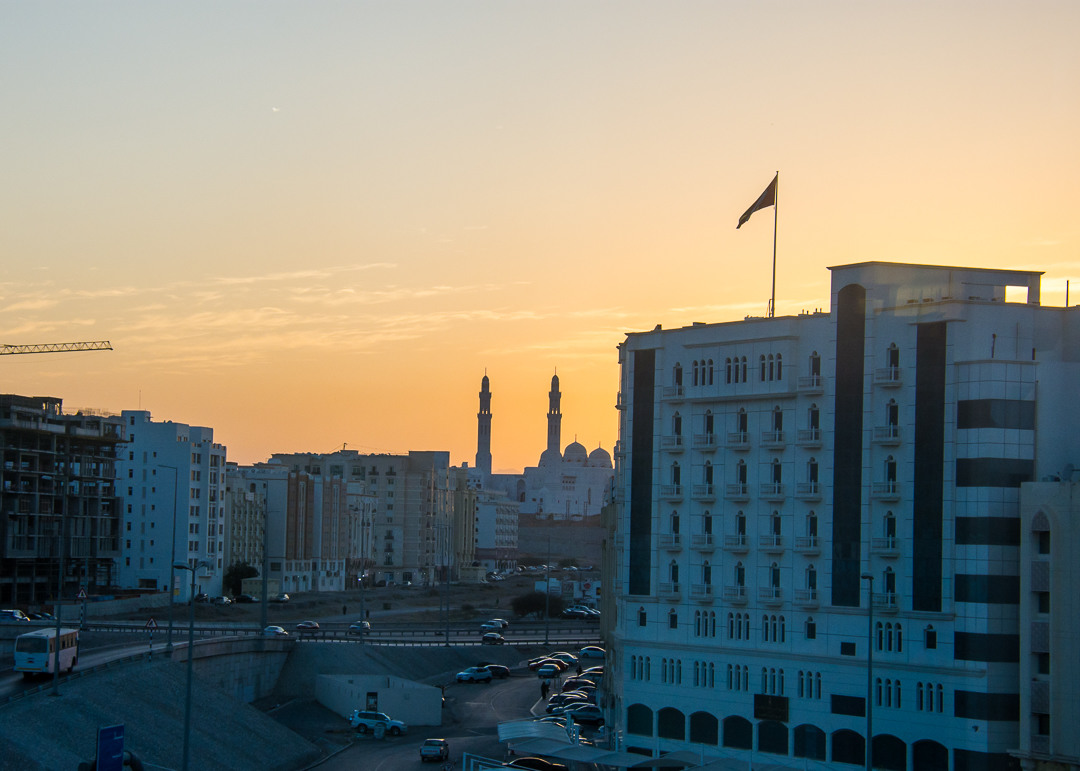
Visitors to Oman get a rare chance to engage with the modern Arab world while still sensing its old ways and customs, that is if they get out of their hotel for a bit! Muscat, with its pretty coastline, warm temperatures year-round and up-market beach hotels has been mostly marketing itself as a high-end beach destination to wealthy European tourists, offering all the usual comforts for city slickers and luxury lovers.
Muscat actually means ‘safe anchorage’, and the sea constitute a major part of the city today as it did thousands of years ago. The city’s beaches are public and you’ll find locals enjoying a dip, playing games, and of course fishing any day of the week.
The long coastal stretch is home to some of the city’s most popular restaurants and cafes and there’s something for everyone from the western-style chains to local joints and fancier options in the hotels. As I’m particularly fond of Iranian cuisine and it’s somewhat hard to find in New York, I immediately opted for Shiraz in the Crowne Plaze Hotel which offered excellent food with splendid views of the coast.
Almost all my meals in Oman started with a complimentary plate of crudites, fresh mint, walnuts and cheese to be snacked on and/or added to your meal as garnish.
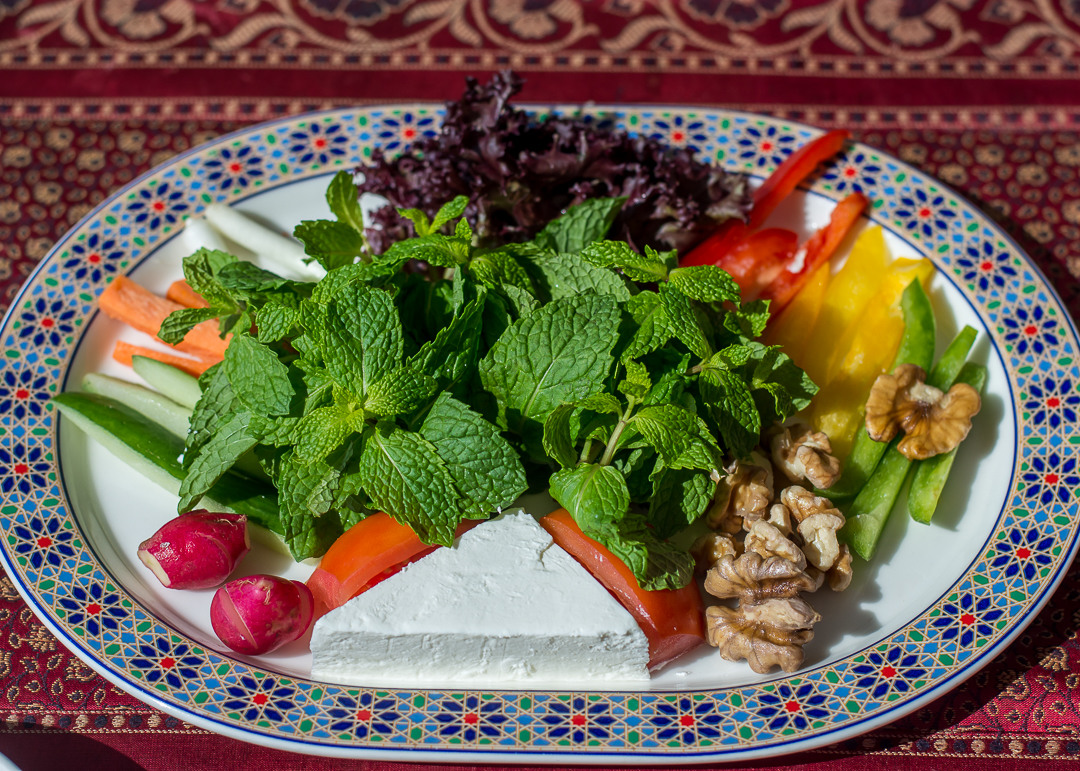
Salad anar kheyar: fresh pomegranate, cucumber, dry mint, cheese, pomegranate dressing
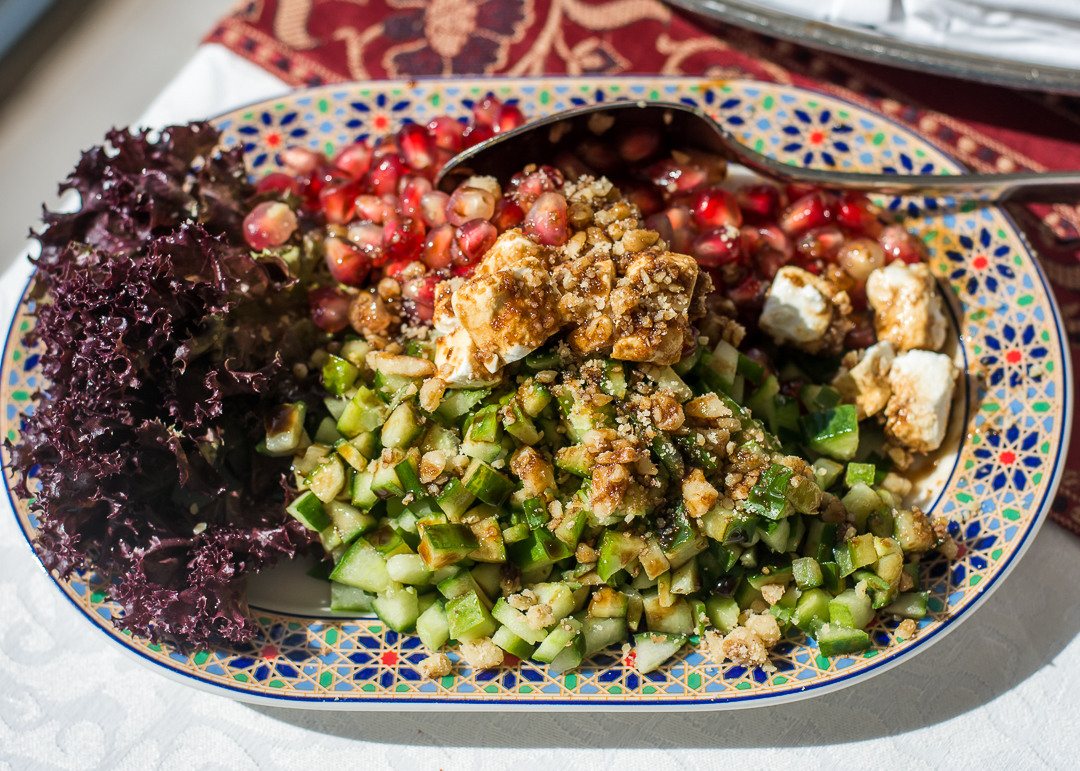
Chicken and beef kebabs, Iranian rice
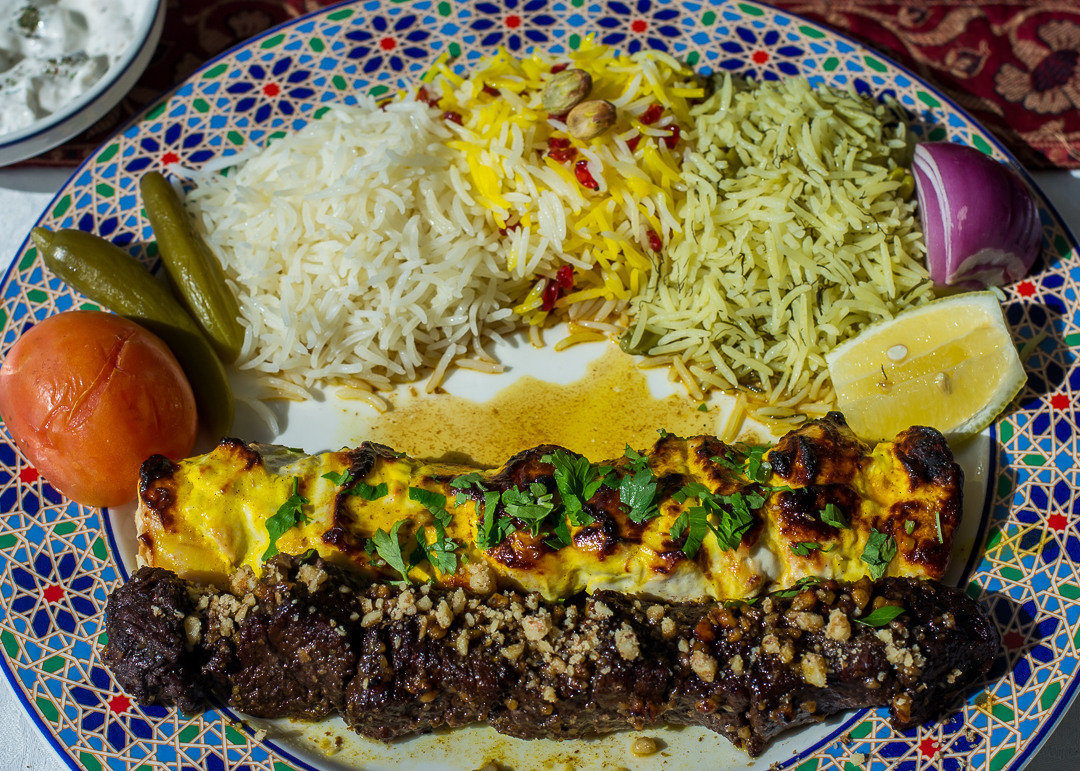
Faludeh: Persion rice noodle sorbet with fresh lime juice and saffron ice cream
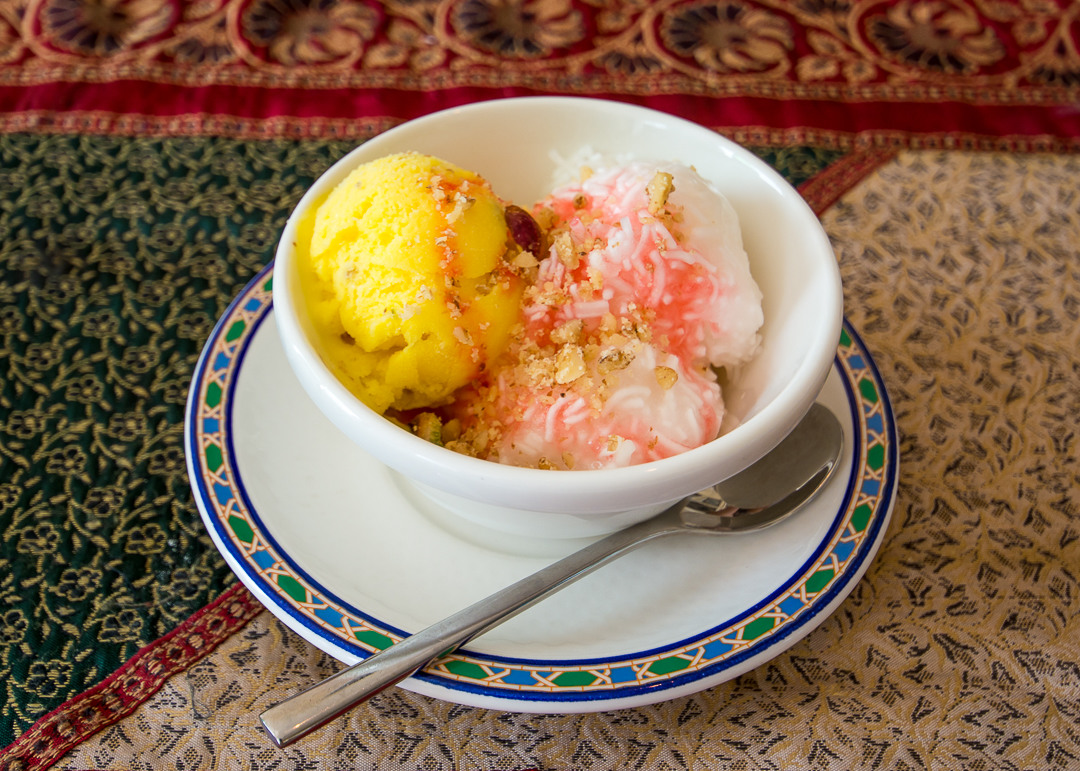
If there is one place you must absolutely visit in Muscat, it’s the Sultan Qaboos Grand Mosque, a glorious and magnificent gift from the Sultan to the nation to celebrate its 30 years of reign.
Women must wear non revealing clothing and a head scarf to visit the mosque so I happily took my scarf out and asked a local to help me put it on, not an obvious task for beginners!
My friend also rented the traditional black abaya for the visit and we headed up to the gigantic marble fortress, already feeling the heat of the mid-morning sun.
The finest example of modern Islamic architecture in the city, the Mosque is quite imposing from the outside, a gleaming vision of white in an eerily quiet setting.
Up to 20,000 worshipers can be accommodated inside and you can’t help but try and picture the scene during a major celebration which must be quite a sight.
The ablution rooms await worshipers for the ritual cleaning before prayer.
Then straight ahead is the entrance to the mosque.
The smaller building to the right contains the private musalla (prayer hall) for the women, able to hold up to 750.
Back outside, every angle is as awe-inspiring as the next and close-ups show the incredible design and craftsmanship that went into its build.
Made from marble, sandstone and wood, the entire mosque took 6 years to complete and opened in 2001. It’s worth venturing into the riwaqs (open-air arcades) and courtyards to experience the beauty and serenity of the place.
Look up to see the top of the walls embellished with Qur’anic script.
Even inside the many domes you’ll find work of art worth stretching your neck for.
Now through the main gate for the piece de resistance…
Entering the main prayer hall, even the non-religious can’t help but being moved at the splendor all around and the sheer magnitude of it all.
The 50m-high central dome is simply magnificent and the 8m-wide Swarovski crystal chandelier with its 1,122 lights is just breathtaking. I found myself suddenly wondering if Versailles had the same effect on me, though it seemed pointless to compare…different places, different eras but similar opulence!
The ceiling is also far from being the only show stopper – looking at your feet you’ll be admiring what was once the world’s largest rug (Abu Dhabi’s Grand Mosque now holds the title…it is competitive in this part of the world). The fine Persian carpet was made by 600 women in Iran over 4 years and measures 70m by 60m, weighing a hefty 21 tonnes.
The walls complete the stunning picture with exquisite carvings and paintings.
And of course the exit door merits a long look before you head out, if only to marvel at the level of the woodcraft.
Everything here shuts down for the midday break between 1pm and 4pm so it’s the perfect excuse for one of those really long lunches Omanis love to take. A really good one can be had at The Chedi Hotel, one of the first stylish resorts on this stretch of the Gulf.
The chic restaurant’s terrace facing the sea is probably THE best setting for a leisurely alfresco lunch.
We indulged in a little mezze with a Halloumi & watermelon salad and a seafood soup – healthy, filling and most importantly scrumptious. No surprise it’s the most famous hotel in Muscat even after all these years.
Leaving the city center behind and heading south along the coast will get you to one of Muscat’s most iconic views – the Muttrah harbour. The seafront crescent is lined with merchant houses, significant reminders of the city’s commercial past, and is where you’ll get the best atmosphere of old-time Oman and the city’s most interesting street life.
In the morning, the fish souk is brimming with activity as the daily catches start coming in.
The variety is unlike what you’re used to, and small sharks are a common sight, featuring heavily on local restaurants’ menus.
Nearby, the Muttrah Souk in the middle of the corniche is hard to miss and is by far the most popular attraction around.
Navigating its winding alleys is the best way to soak in the multicultural side of Muscat with Omani, Indian, Pakistani, Zanzibari and Iranian shopkeepers mixing inside the labyrinth.
You’ll find plenty of pashminas, coffee pots, incense burners, Arabic coffee, dried limes, perfumes, antiques, gold, rugs, etc. for hours of shopping and haggling.
At the east end of the harbour, a giant model of an incense burner sits atop a cliff overlooking the sea. It is surrounded by Riyam Park, a green oasis with a funfair and plenty of space for picnicking, a favorite weekend activity in Oman.
Continue a little further south and you’ll soon get a very nice view of the original Old Town spread out between two old Portuguese forts. You can still see parts of the old wall and the three remaining gates as well as a good scattering of traditional Arabian buildings and mosques.
The Bait Al Zubair museum is an enlightening stop with its excellent collection of jewelry, costumes, and Bronze Age household items in a traditional Omani townhouse.
In the backyard outside you’ll find miniature reconstructions of traditional stone houses with a falaj (ancient irrigation system) and running water, a setup still widely seen throughout the country.
Next stop is Al Alam Palace, the Sultan’s residence and Oman’s most flamboyant example of contemporary Islamic design.
The palace isn’t open to the public so the closest you’ll get is the first gate which still affords good views of the gold and blue pillars and the overall architectural style, interesting to say the least.
Back in the city center, if you wish to experience Oman’s finest restaurant, you only need to locate the impossible to miss Royal Opera House and make your way to the imposing wooden door of Al Angham.
The inside is simply breathtaking (another ‘expense/gift’ from the Sultan) and the attention to details is such that it’s customary for your waiter to first give you a tour of the premises, highlighting the provenance and craftsmanship of everything from the carved ceiling…
…to the napkin holders made of old silver rings.
Private rooms are coveted by the highest dignitaries of the country and visiting royals and the money spent on the decor in this ‘mini palace’ is undisputedly insane.
The restaurant is an ode to Oman as everything is local, the waiters are all Omanis, and the menu focuses on traditional recipes albeit presented in a modern way. My appetizer consisted of a mini meat pie (meat masanef), dried baby shark salad and a samosa. Honestly I wasn’t wowed by any of them and though the presentation was really nice, it felt short on the taste.
The main dish was another story though and one of the highlights of my meals in Oman. Omani Shuwa is a traditional dish of roasted lamb marinated with special spices and vinegar, covered with banana leaves and slow roasted overnight in an underground pit…insanely good! One of the best lamb dishes I’ve had in my life for sure.
When exiting the restaurant, you’ll be greeted by the Royal Opera House light show which we could see every night from our hotel – it might have just been left from the Sultan’s 44th anniversary of reign prior to our visit, but a nice spectacle nonetheless.
On a last note, while Al Angham is meant to be the jewel of Omani cuisine in Muscat, I was more impressed with the decor and level of service than with my food which was inconsistent despite that incredible lamb. My favorite meals were always the Persian ones whether eaten at upscale restaurants or hole in the wall places. My best recommendation for Muscat would therefore have to be Shabestan for its exceptional Persian cuisine near the Grand Hyatt hotel.
At first it’s all the same with the usual crudites platter and bowl of labneh…
…but then they bring their freshly made barbari bread cooked right in the middle of the restaurant in an open oven and that’s when you know you’ve stumbled unto something special. The still warm flatbread is so soft and light it almost dissolves on the tongue and could be eaten straight, if it wasn’t for the myriad of dips and stews waiting to be scooped up.
It might not look very appetizing, but the Zeytoon Parvardeh (purée of green olives mixed with pomegranate syrup, olive oil, walnuts, parlsey, garlic and coriander) was a knockout.
Same thing with my Khoreshet-E Ghormeh Sabzi, an Iranian spinach stew with vegetables, kidney beans and lamb.
My friend got the Chelo Kabab-E Joojeh, a traditional kebab of charcoal grilled chicken cubes marinated with yogurt and saffron.
We were rolling at this point and happy as can be, our meal getting even better with the arrival of this whimsical saffron tea set. It all felt very ‘Grand Budapest Hotel’ for a moment.
Despite the lack of appetite, we managed to finish it all off with yet another classic Faloodeh.
Enough of the cosmopolitan life, we were getting ready to leave the coast behind and explore Oman’s interior for the next week…stay tuned!

